by Sam Glaser
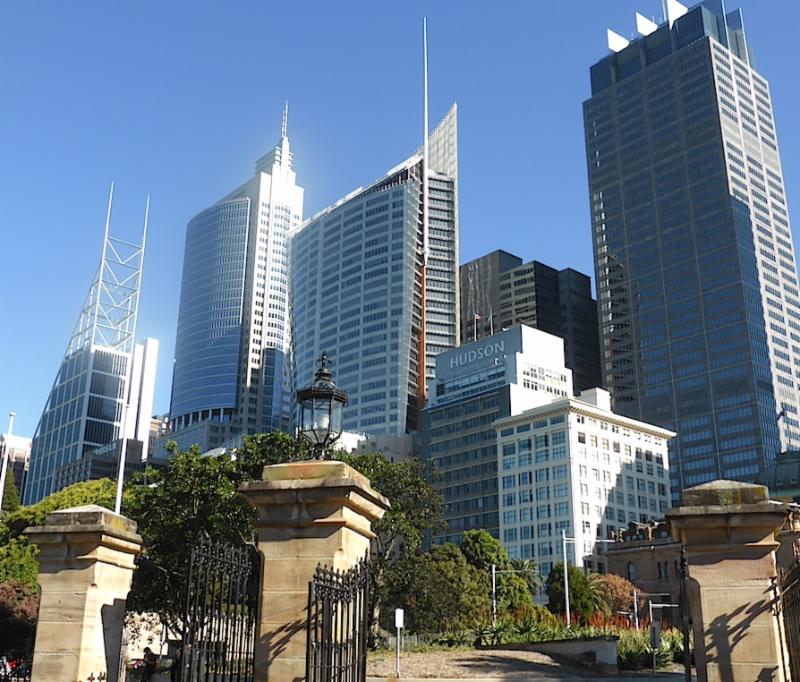 When I started out in music my primary motivation was to get my songs heard. That primal urge to offer shelter to the melodic offspring of my subconscious led me to open a recording studio, assemble bands, learn theory, practice the piano and take voice lessons. A byproduct of the career that this passion invoked is a desire to offer a path to young musicians who are wrestling with their musical inclinations. Establishing mentorship programs, music retreats and choral and instrumental ensembles is all part of this effort. As a militant music advocate I maintain that basic music education is a crucial part of any modern school curriculum. Somehow that truth seems lost on American administrators, especially in Jewish day schools. When something has to be cut to accommodate shrinking budgets it’s usually not math and English; presently music education in both public and private schools is MIA or at best, piecemeal.
When I started out in music my primary motivation was to get my songs heard. That primal urge to offer shelter to the melodic offspring of my subconscious led me to open a recording studio, assemble bands, learn theory, practice the piano and take voice lessons. A byproduct of the career that this passion invoked is a desire to offer a path to young musicians who are wrestling with their musical inclinations. Establishing mentorship programs, music retreats and choral and instrumental ensembles is all part of this effort. As a militant music advocate I maintain that basic music education is a crucial part of any modern school curriculum. Somehow that truth seems lost on American administrators, especially in Jewish day schools. When something has to be cut to accommodate shrinking budgets it’s usually not math and English; presently music education in both public and private schools is MIA or at best, piecemeal.
I just returned from a frenetic two-week concert tour of Australia. I love to be utilized fully when I come into any given town, and my Sydney agent Judy Campbell made sure that there was very little downtime. Keeping busy on the road is a good thing – that way I don’t get too homesick. What I didn’t expect was just how moved I would be by the deep connection to music down under. I found music everywhere. Nearly all my new “mates” were musically literate and most played instruments, sang and actively patronized the arts. From the guitarists in the pub to the Aborigine didgeridoo street musicians, I felt that there was a constant soundtrack to my wanderings. I’d like to dedicate this month’s newsletter to a diary of my trip and the powerful impact of an education system where music and the arts are a priority.
After months of laborious planning, June 1st finally arrived. My suitcase was carefully packed and my wife devotedly drove me to LAX, a bi-weekly ritual in our family. I had to perform a Jedi mind trick on the woman who checked in my bag. It was over 60 pounds and should have been another $120 for the overage. I beamed a friendly smile and kept asking her questions about the layover and she dutifully answered my questions while absentmindedly putting on the tags. I did a happy dance through passport control. I seem to have the same strange symptoms every time I leave town: twenty-four hours of the blues with the stress of preparing for the trip and leaving my family. Then I get to my gate and breathe, light as a feather and stoked for the journey. Sometimes I even look at myself in the airport bathroom mirror and I have to stifle laughing out loud. “On the road again…”
I slept ten of the eleven hours on Fiji Airways to Nadi, Fiji (pronounced Nandi.) I was met by a Fijian four piece, ukulele-based band happily jamming in the terminal at 4:30am. Following a second security check I prayed and did yoga in the transit lounge. Ommmm. I watched the sun come up over some green hills not unlike the windward side of Oahu…this would be my reward after two intensive weeks of concerts in Australia. Once again, I slept for most of the 4.5-hour flight to Sydney. No sleeping pill required. All I need is a window seat, earplugs, tempur-pedic pillow, slippers and the drone of the engine. The rest of the flight I worked on proofreading my new Jewish Handbook that I am so excited to be publishing soon. Surprisingly, Fiji Airways is a fine, modern airline with in seat movies and kosher meals but every seat was sold out and I was crammed in next to a fellow broad-shouldered surfer.
My hosts for the Australian Jewish Choral Festival
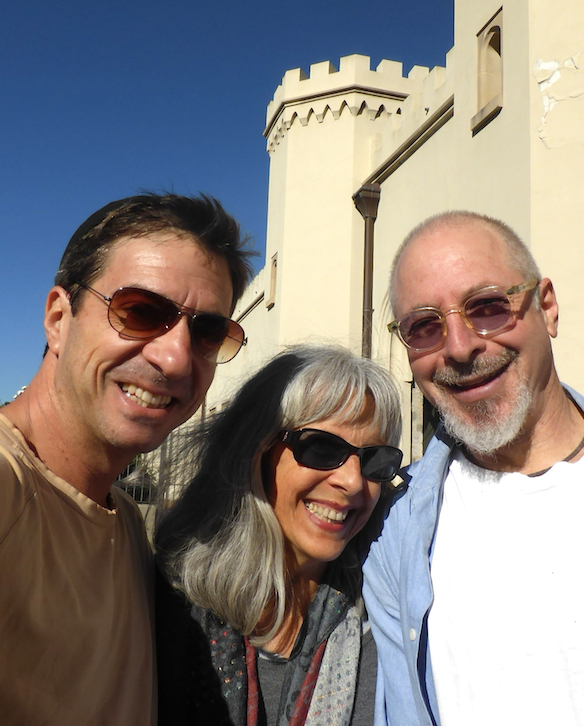 (AJCF), Judy and her husband Mark picked me up and drove me straight to the festival venue so I could check out the piano and decide on any stage diagram changes. The Music Conservatorium is a modern, cutting-edge music academy with astonishing rehearsal and performance spaces and more grand pianos than I’ve seen under one roof. I was excited to see that I would have a perfectly tuned Steinway concert grand for my show. Pianos like that simply suck the notes out of my fingers. Playing them is effortless, with dynamics that range from floating through a wispy sky to crashing cumulo-nimbus thunder.
(AJCF), Judy and her husband Mark picked me up and drove me straight to the festival venue so I could check out the piano and decide on any stage diagram changes. The Music Conservatorium is a modern, cutting-edge music academy with astonishing rehearsal and performance spaces and more grand pianos than I’ve seen under one roof. I was excited to see that I would have a perfectly tuned Steinway concert grand for my show. Pianos like that simply suck the notes out of my fingers. Playing them is effortless, with dynamics that range from floating through a wispy sky to crashing cumulo-nimbus thunder.
The Sydney afternoon weather was breezy with bright blue skies following the morning rain and the impressive downtown area was fresh and shining. Mid-June means mid-winter in this part of the world. We took a walk around the Royal Botanical Gardens and the imposing Government House built in 1837. Children on field trips from their respective private schools were decked out in coats and ties and in the case of the Muslim academy, headscarves. These outfits didn’t stop them from happily rolling on the grass and climbing all the statues and trees. Eventually my gracious hosts nudged me back to the car to head to the North to get ready for my Shavuot late night learning program. A habit I would repeat every time I got to the car: I would head to the front passenger door on the right side and my drivers would patiently say, “No, Sam, wrong side. Again.” It’s a tough adjustment to sit in the US version of a driver’s seat when there’s no steering wheel or brake. Especially when entering yet another roundabout. The same traffic patterns are in force on sidewalks: one passes on the right and no, it never feels normal.
I met my hosts for the Shavuot holiday, Rabbi Gary and Jocelyn Robuck and two of their college age kids, Shoshie and Aaron. They have a spacious, modern home that they custom built right next to their synagogue and now are selling since the proximity is making them feel claustrophobic. The shul dinner was excellent, prepared by Jocelyn and Pauline, both ex-caterers, and the singing around the table was inspired. I marveled at how temple members were so musical…it was only later that I found out that the dinner was primarily for the Temple choir! Soon we adjourned to the elegant, recently renovated sanctuary for the evening service. I opened the proceedings with my V’haer Eyneynu in honor of Shavuot and closed with Blessing. I felt such a sense of gratitude from this congregation; this community uses my music throughout their davening and I received a hero’s welcome. Rabbi Gary is also a chazzan and he and the 25-voice choir try to mix up traditional music with new songs from throughout Diaspora to keep things interesting. And it wasn’t just the choir that was singing; as soon as the rabbi would feature a well-known song, everyone assembled chimed in with spirited abandon.
I led a two-hour “How to Observe the First of the Ten Commandments” workshop plus some additional Shavuot insights. Shavuot is the holiday that seemed to be left out of the Hebrew School syllabus as I grew up. Now I feel like it’s my personal discovery. I did my best to inspire the congregation into sharing my enthusiasm for this anniversary of receiving the greatest bestseller of all time from the Creator of the Universe. By the time midnight was drawing near I started to lose focus…jet lag was hitting hard. Thanks to adrenaline and the open miracle of a second wind I was able to keep my head together and even deliver a semblance of a conclusion that wrapped up all my points. As we walked back to the house the rabbi queried, “At what point did you achieve a sense of certainty in your belief in God?” That comment got me thinking. Certainty is a big word, one that I haven’t entertained. Yes, I suppose I am certain about God. I perceive God’s hand in the world and in my life everyday and evidently that clarity informs my lecture style. Then the rabbi brought up the Holocaust as a typical stumbling block for most, launching us into a late night theological odyssey.
I opted not to go to shul the next day, grateful that I wasn’t programmed to lead the services. I slept a luscious, deep sleep and then davened on my own by the pool under the eucalyptus in their spacious backyard. After a hearty breakfast I headed out on an ambitious bushwhacking expedition. Long ago realized that my favorite way to travel is to get as far from the city as quickly as possible. Give me bush! Back in LA I had printed a Google map of their Chatswood neighborhood so that I could reach a trail that I imagined would be in the “green area” by the bay a few miles from their home. One thing you can’t tell from a Google map is the topography…sure enough that green area on my map was a steep, dense rainforest that plunged down into a river valley below. No trails, no access. Just as I was about to give up hope in finding a proper path I saw a turnoff to the North Arms Reserve. Bingo.
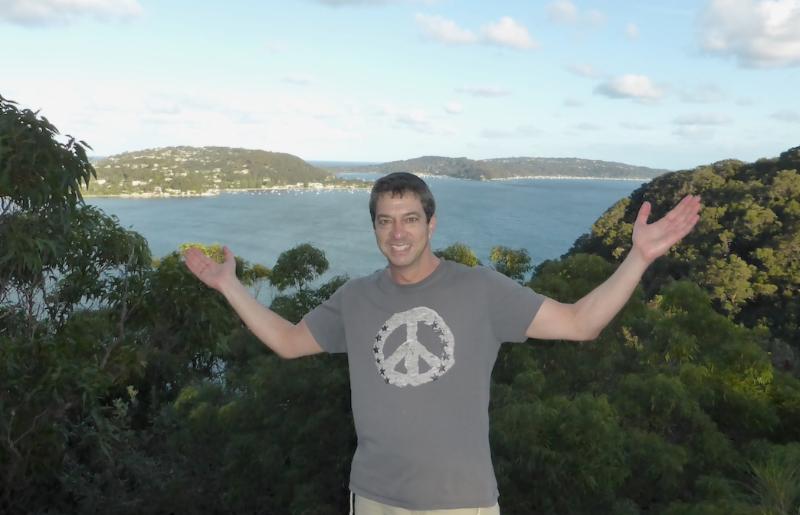 I launched on a shaded trail to a beautiful fishing spot in the middle of Sugarloaf Bay. I saw countless exotic birds including trees filled with brilliant parrots, rainbow lorikeets, cockatoos and these crazy crested pigeons. I felt like I was on the set of Avatar, and the complete solitude of the path made me a bit concerned that some wild Pandora beast would come raging through the fern undergrowth. At the terminus I watched a recently retired 51-year-old banker casting his reel for Australian Salmon. He said that they taste nowhere near as good as the Tasmanian variety. Over twenty years working for the same bank and this ex-executive was feeling like he was on the set of Groundhog Day. He felt he had barely escaped with his soul intact…fishing time! We had a relaxed schmooze for a few hours as I ate my bagel, lox and cream cheese Yom Tov seudah (festive meal.)
I launched on a shaded trail to a beautiful fishing spot in the middle of Sugarloaf Bay. I saw countless exotic birds including trees filled with brilliant parrots, rainbow lorikeets, cockatoos and these crazy crested pigeons. I felt like I was on the set of Avatar, and the complete solitude of the path made me a bit concerned that some wild Pandora beast would come raging through the fern undergrowth. At the terminus I watched a recently retired 51-year-old banker casting his reel for Australian Salmon. He said that they taste nowhere near as good as the Tasmanian variety. Over twenty years working for the same bank and this ex-executive was feeling like he was on the set of Groundhog Day. He felt he had barely escaped with his soul intact…fishing time! We had a relaxed schmooze for a few hours as I ate my bagel, lox and cream cheese Yom Tov seudah (festive meal.)
I returned back a different way now that I had the aid of some maps that were posted on the trail. All told I was gone for six hours and I think I covered at least eight sweaty miles over ambling terrain. After mincha and a good shluf (nap) I enjoyed Yom Tov sheni dinner with the Robucks and an animated Hungarian couple. First course was fruit cocktail and second course was three pieces of butternut squash tortellini and a salad. Elegantly prepared and tasty but I must admit I was surprised when the next course was dessert! I made up for the void with mouthfuls of challah. Once again we did a musical benching and then I enjoyed a mikvah with the rabbi in their percolating hot tub by the pool.
The following morning I accompanied Rabbi Gary on a three-mile walk to a neighboring shul. Temple Emanuel is what they call “Progressive” in these parts and therefore doesn’t hold by two-day holidays. We found the vast North Shore Synagogue sanctuary nearly empty and those assembled were very glad to see us. Some of the choir members recognized me from my poster and insisted that I join them. I think there were more of us on the bimah than in the congregation! I faked my way through the various tunes that they employ for the Torah service and mussaf and marveled that I could be 10,000 miles from home, singing with strangers and yet still know most of the tunes. Following a spartan Kiddush we were invited to Rabbi Paul Lewin’s home for lunch. Both the rabbi and cantor of the shul have five children. All were in attendance, which meant that I spent as much time on the floor horsing around as I did at the table. Thankfully what looked like an impending storm didn’t deliver the goods until we were walking the final block of our long trek back to Rabbi Gary’s house. That said, we came home wet and well nourished.
When I awoke from my much-needed nap I watched the Emanuel choir rehearsal and enjoyed my new friend Judy Campbell’s sensitive conducting. Then when the Yom Tov ended I led havdalah and was picked up by one of the altos in the choir, Naomi Jandausch whose job was to escort me to enjoy “Vivid Sydney.” Naomi was excited to tell me that she had walked down the aisle to Believe in Me from my Presence album. She was enthusiastic company and my first time seeing Vivid was such a treat! Can you imagine that they decorated all the landmarks downtown with wild light shows in honor of my trip? I was so grateful for the good timing…one month every year Sydney lights up on weekends. Innovative images are projected onto scores of downtown buildings accompanied by evocative electronic music. Tens of thousands of colorful locals wander the streets to enjoy the sensation and of course, the mass of humanity creates a carnival atmosphere. The highlight was the vast projections cast over the harbor to the iconic Opera House. Naomi and I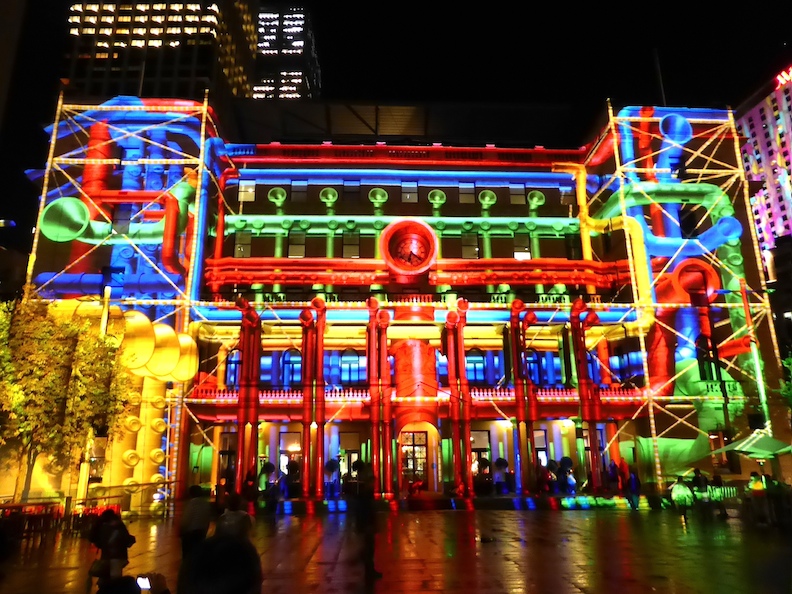 walked until we couldn’t walk anymore, shot plenty of pictures that will likely not come out and then found one of the few establishments where this kosher consumer could eat. I sent sleepy Naomi home since I was fired up with energy to explore more of the town. Thanks to an excellent light rail system I felt perfectly confident that I could find my way back to Chatswood.
walked until we couldn’t walk anymore, shot plenty of pictures that will likely not come out and then found one of the few establishments where this kosher consumer could eat. I sent sleepy Naomi home since I was fired up with energy to explore more of the town. Thanks to an excellent light rail system I felt perfectly confident that I could find my way back to Chatswood.
One of my primary objectives that night was to sample a pint of the local brew. I stepped up to one of the many pubs that I found on nearly every downtown block and asked for advice on a local lager. By my third round I nailed it! Coopers with a few limes. I found a group of musicians to hang out with and they soon became my “mates.” Thanks to a recent wave of bar brawls there is a new curfew in effect so when the pub emptied shortly after midnight I walked towards the Central Railway station. When I stopped for directions a friendly Indian man said, “You don’t want to walk through the park, my friend. You’d better go back to the Town Hall station.” Grateful for his advice but reluctant to shlep even another few feet, I traipsed up the hill to Town Hall to find that the last train had left the station. Oy! Thankfully there were night buses that trace the train routes, only I had just missed the 12:30 bus. OK. More wandering for a half hour and then a bus ride and a dark twenty-minute walk to my host’s home. Great night!
I awoke bright and early to daven and then was escorted by the ever-able office manager Pauline Lazarus to the supermarket in St. Ives since it sports a well-stocked kosher section. Australia does not enjoy the plethora of hechshered (kosher symbol) products that we do in the US. One is forced to stick with the limited inventory in the kosher aisles, much of which is imported from the US and Israel. Thankfully they did have an ample kosher bakery. I filled the cart with food for the week as I was moving into an apartment hotel in downtown Sydney, Woolloomooloo, to be exact. Then off to meet my Sydney band, hand-picked to perform with me on this trip. I was thrilled to find that these five musicians were of the highest caliber and had come to the rehearsal ready to rock on all my songs. We also had a three-voice background vocal section consisting of Josh Robuck, the rabbi’s talented musical theater-trained son, Judy Campbell and adorable voice teacher Andrea Catzel. We slogged through the details of the set and then munched on falafel with all the trimmings. Over the course of this two-week tour I would be followed by a two-camera crew documenting the experience. I am grateful to Chris and Dean who were on hand catching every note and emotion of the extensive rehearsal.
Judy then drove me to my downtown hotel which featured huge windows with a view of skyscrapers, two king size beds, fifteen-foot ceilings and a full kitchen. She then handed me a wad of colorful Australian cash that would be my thirteen-day per diem. Nice! I was one of three conductors invited to take part in the Australian Jewish Choral Festival (AJCF) and one of my cohorts, Boston-based Josh Jacobson was staying in the room above me. I had to do some fancy footwork with the office staff to work out how to get in and out of the building over Shabbat. Alarms and keypads were plentiful and just getting in the building required a swipe of an electronic card. After a thorough explanation of the obstacles to my observance the good-natured manager gave me the master key to the building! I could enter through the car park when a car came in and never have to worry about the front door or emergency exit. See…you just have to ask!
I scrambled to get everything in place for Shabbas and then went upstairs to enjoy a delicious dinner with Josh and his spunky wife Rhonda. We nurtured our fine Cabernet and enjoyed the city lights while we discussed music, travel and several rounds of Jewish geography. Of course we did plenty of three-part z’mirot singing! After Shachrit the next morning I seized the day to have a walking tour of this amazing city. Under blustery blue skies I walked first to the incredible New South Wales Art Gallery. Built in 1871, this is one of the most beautiful museums in the world inside and out. I wandered every single room, taking extra time at the canvases of Australian artists with whom I was unfamiliar. I then ventured across the hundred acres of perfectly maintained grass known as The Domain and found myself at the State Library of New South Wales. A spectacular multistory nineteenth century room held books up to the rafters, replete with rolling brass and walnut ladders for access. On the top floor I enjoyed a Canon-sponsored exhibit of the top press photographs of the year.
By the time I made it to bustling harbor side Circular Quay (pronounced “key”) I was tired and thirsty. Who knows how many miles I had put on at that point in the day! There, overlooking the ferry wharfs was a perfectly situated pub with outdoor seating and great rock and roll on the PA. If only I had some cash! Well, as I’ve mentioned, you don’t get what you don’t ask for. I stumbled up to the bar and asked the young, blonde bartender for a pint. And then I told him, “but thanks to the Jewish Sabbath I have no money.” He replied politely, “well, then, I don’t think I can help you.” He then asked if this Sabbath thing had anything to do with Ramadan. “No!” I replied, “the Sabbath is the way Jewish people take a break from acts of creativity every week. We step back from the canvas of our lives to appreciate the work of the Creator and not engaging in commerce is one of the ways.” He pondered that point, looked this way and that, and poured me a glass full of that delicious Coopers ale. Yum!
I took my pint to a nearby table filled with upscale young people enjoying the day. One woman spotted my kippah and said, “Oh, you’re Jewish! Shabbat Shalom!” She then gushed how much she loves Jews, how she’s traveled in Israel and is certain we are the Chosen People. She then rolled up her sleeve to show me that Isaiah 53 was tattooed up her forearm. As we laughed and nursed our pints she and her friend made sure mine was never empty. By the time I got to the Contemporary Art Museum I was less steady on my feet but perhaps more open to appreciating the wild assortment of images, films and sculptures. Another great coincidence arranged for my Shabbas explorations was that this week in June marked the “Bienniale of Sydney” anniversary and all the museums were free! The theme of this year’s festivities was a prophetic phrase emblazoned on many buildings: “You Imagine What You Desire.”
I took the long way home via the amazing Opera House and Botanical Gardens and then after mincha-maariv prayers got a ride to the Music Conservatorium for the opening of the AJCF. I
 started the proceedings with a rousing havdalah and sing-along. Now I would be put to the test. The eighty candidates assembled had notebooks with several of my SATB arrangements. For the next sixty hours I would conduct the whole group in “Big Sing” rehearsals, form my own twenty-five voice Rock It Choir, teach workshops and give concerts both for the group and a gala show for the public. I must say that conducting the first song that Saturday night was nerve wracking. I started working on the parts section by section and soon surrendered to the joy of hearing my music sung. At first I waved my hands stiffly but then closed my eyes and “saw” their entrances in my heart rather than on the page. By the time we had my Blessing song down I felt enveloped in a sonorous angelic wind that responded to my every gesture. Wow.
started the proceedings with a rousing havdalah and sing-along. Now I would be put to the test. The eighty candidates assembled had notebooks with several of my SATB arrangements. For the next sixty hours I would conduct the whole group in “Big Sing” rehearsals, form my own twenty-five voice Rock It Choir, teach workshops and give concerts both for the group and a gala show for the public. I must say that conducting the first song that Saturday night was nerve wracking. I started working on the parts section by section and soon surrendered to the joy of hearing my music sung. At first I waved my hands stiffly but then closed my eyes and “saw” their entrances in my heart rather than on the page. By the time we had my Blessing song down I felt enveloped in a sonorous angelic wind that responded to my every gesture. Wow.
The next day would prove to be one of the craziest marathon days in my career. I’m wondering how the coordinators of the conference thought that anyone could pull it off! I find that the rehearsal is often more exhausting than the actual show. Try five rehearsals back to back, plus a workshop with a men’s synagogue choir that was looking to me for advice with their technique. (Just sing in tune, boys!) At one point, Judy saw my frazzled state and said, “Why don’t you just walk with your choir down to the park and rehearse by the water?” Great advice, indeed. We walked to the waterfront at Farm Cove, formed a semi-circle and sang our repertoire, and then some. Soon a crowd gathered and that awakened the “ham” in these Jewish ladies. We segued from Israeli repertoire into Waltzing Matilda and Amazing Grace and then got the crowd to join us for some acapella Israeli folk dancing. We were particularly touched that some German tourists were in on the fun.
By the time my sound check/rehearsal for my big public concert arrived, I was fried. Nothing left. I got through a few tunes with the band but was having technical difficulties with the sustain pedal of my keyboard set up alongside the Steinway. I had sweat through my clothing and was barely able to be gracious to the hardworking sound guys and my patient band. Since this concert was being recorded with a multitrack setup there was also pressure to get good levels. At 7:40pm before my 8pm, show I turned to my benevolent handler, David and said, “I have to get into a shower, any shower, now.” I abandoned the sound check…what would be would be. David escorted me to a backstage green room and pointed out the shower. Oh, the pleasure of a powerful blast of hot water! I used the liquid soap from the sink and dried off with paper towels. It never dawned on me how hard it might be to dry the center of one’s back with a small paper towel. Still somewhat wet, I put on my stage clothes and arrived backstage as they were announcing the band. We put on a great show, all things considered. Thank God my voice held out, the choir was effervescent and I was told the mix in the acoustically perfect room was excellent. Sold plenty of CDs too!
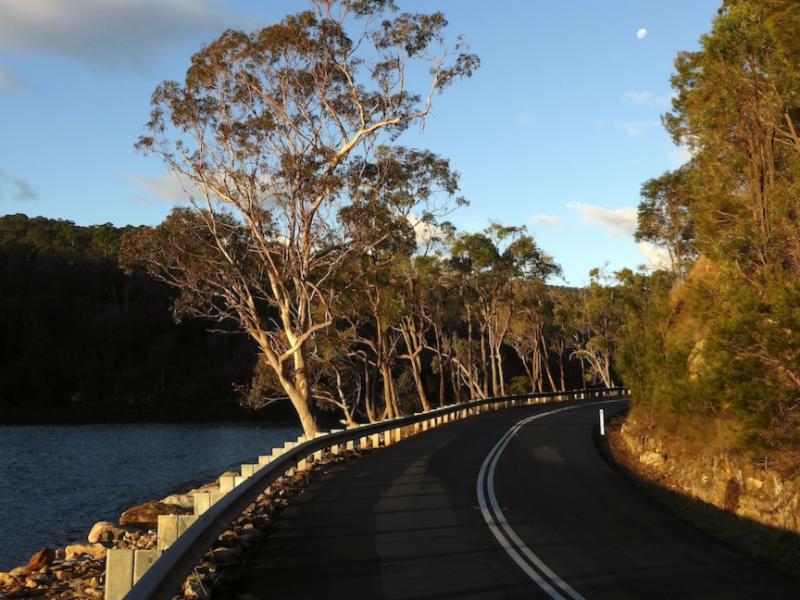 The next full day had more of the same: choir performances, rehearsals and workshops, culminating in a concert that was staged mostly for our own group and friends. We all felt a combined sense of satisfaction and relief, amazed at what we were able to accomplish in two and a half brilliant days. I had made a personal commitment to be there 100% for the festival and did not attempt to sneak out when my presence wasn’t necessary. That said, when it ended, I left the final cocktail hour with a few of my choir members to enjoy the parts of Vivid Sydney that I had missed. One of the grand illuminated buildings we passed required a human conductor to set the pace for the extraordinary light show. We boarded a ferry and got an aquatic view of the Opera House and downtown ablaze with colors intensified by the reflections on the water. Then to Darling Harbor where a Bellagio hotel-style fountain display was paired with a holographic film projected on a wall of mist. Right in the middle of the show the rain came down but no one left! Hundreds of umbrellas immediately opened providing shelter for all. These Sydneyites come prepared! Half the crowd was Asian; I was told by a cab driver that their population has swollen to a half a million residents in recent years.
The next full day had more of the same: choir performances, rehearsals and workshops, culminating in a concert that was staged mostly for our own group and friends. We all felt a combined sense of satisfaction and relief, amazed at what we were able to accomplish in two and a half brilliant days. I had made a personal commitment to be there 100% for the festival and did not attempt to sneak out when my presence wasn’t necessary. That said, when it ended, I left the final cocktail hour with a few of my choir members to enjoy the parts of Vivid Sydney that I had missed. One of the grand illuminated buildings we passed required a human conductor to set the pace for the extraordinary light show. We boarded a ferry and got an aquatic view of the Opera House and downtown ablaze with colors intensified by the reflections on the water. Then to Darling Harbor where a Bellagio hotel-style fountain display was paired with a holographic film projected on a wall of mist. Right in the middle of the show the rain came down but no one left! Hundreds of umbrellas immediately opened providing shelter for all. These Sydneyites come prepared! Half the crowd was Asian; I was told by a cab driver that their population has swollen to a half a million residents in recent years.
After the show we got a bite to eat and then the ladies headed home, leaving me to audition an Australian version of an American top-40 band and then on to a Woolloomooloo Irish pub where a trio sang gruff Irish folk songs. The bartender/owner took personal pride in demonstrating the nuances of the beers on tap and the finer points of World Cup soccer on the TV. As the hour grew late I made one more stop at a lively establishment on the block of my hotel where rowdy twenty-somethings were gathered around a jukebox singing at the top of their lungs. Yes, they still have jukeboxes!
 Tuesday was my one and only day off during this two week tour. I was excited for an extensive hiking tour of the renown Blue Mountains. Sure enough, I cranked open my floor to ceiling blinds to see that it was pouring rain. I caught the train to the North to meet Judy’s husband, sax man Mark Ginsburg at the Linfield station where we took shelter from the drizzle under the awning of an amazing coffee joint called Café Feoh. These Australians sure take their coffee seriously! When Sydney-based Cantor Shimon Farkas came to LA before Passover I offered to meet him at Coffee Bean. He said, “No, I’m going to take you to a place in Beverly Hills that serves REAL coffee.” Well, I was slowly becoming an aficionado and can safely say that that morning’s mocha was the best I’ve ever had. No sugar required! We walked back to Mark’s home while the clouds dissipated and played some groovy piano-soprano sax improvised meanderings and then boarded his zippy Audi Quattro for West Head. This would be a more coastal (and hopefully drier) version of the hike we originally planned. We wound through a gorgeous wilderness area taking care not set off any photo speed traps on the way. I wouldn’t survive a town with such tightly controlled traffic enforcement! We then embarked on a five-mile loop that followed bluffs to beaches and featured caves and ancient kitchens with aboriginal art.
Tuesday was my one and only day off during this two week tour. I was excited for an extensive hiking tour of the renown Blue Mountains. Sure enough, I cranked open my floor to ceiling blinds to see that it was pouring rain. I caught the train to the North to meet Judy’s husband, sax man Mark Ginsburg at the Linfield station where we took shelter from the drizzle under the awning of an amazing coffee joint called Café Feoh. These Australians sure take their coffee seriously! When Sydney-based Cantor Shimon Farkas came to LA before Passover I offered to meet him at Coffee Bean. He said, “No, I’m going to take you to a place in Beverly Hills that serves REAL coffee.” Well, I was slowly becoming an aficionado and can safely say that that morning’s mocha was the best I’ve ever had. No sugar required! We walked back to Mark’s home while the clouds dissipated and played some groovy piano-soprano sax improvised meanderings and then boarded his zippy Audi Quattro for West Head. This would be a more coastal (and hopefully drier) version of the hike we originally planned. We wound through a gorgeous wilderness area taking care not set off any photo speed traps on the way. I wouldn’t survive a town with such tightly controlled traffic enforcement! We then embarked on a five-mile loop that followed bluffs to beaches and featured caves and ancient kitchens with aboriginal art.
We returned just as darkness fell. Sunset in LA mid-June is about 7:45pm. Here it’s at 4:30! One must plan their day in outback carefully during the Southern Hemisphere winter. Back at the Ginsburg home we jumped into their Jacuzzi perfectly situated on a back deck overlooking the bush. Following a few beers and good conversation we dined on tuna sandwiches (keeping kosher isn’t always glamorous!) and I boarded a train back to the city. I went straight to Town Hall and enjoyed a brisk walk along popular George Street up to the harbor. I shot some glowing night shots of skyscrapers and the Harbor Bridge and then continued up to the tip of the peninsula where the Opera House holds court. What good fortune that on my free night my childhood keyboard hero Chick Corea and vibes master Gary Burton were playing this storied venue. I got in line for tickets and overheard the attendant stating that there were only a few seats left in the nearly 6000 capacity hall. It dawned on me that if Chick were playing in LA he would barely fill a 200 seat club and the place would be half empty for the second set! There was a woman in line next to me and I nodded that she could go ahead. She responded that she wasn’t there to buy a ticket…she had one to sell. I told her, “well I need one ticket!” She said, “ok, is half price alright?” I picked up the ticket for $50 and she said, “you’ll like these seats…you’re in the stalls.” From that description, as far as I knew, I was over by the bathrooms. But when I presented my ticket to the usher he marched me down to the third row, right in front of Chick’s keyboard. Yes, God loves me!
Chick and Gary played a set of epic instrumental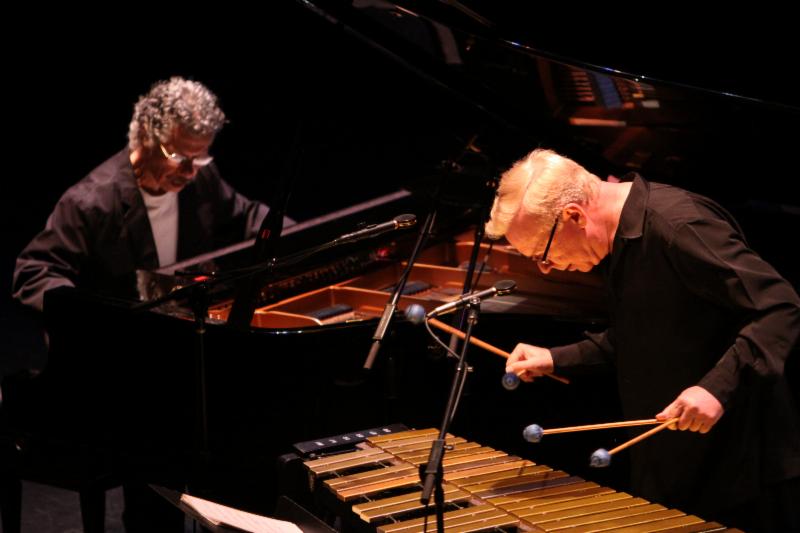 synchronicity that left the audience breathless. I noted that the crowd was the best behaved that I had ever seen. No catcalls, no standing ovations, just polite, warm applause all night. I befriended the blokes around me and they made sure that I had a beverage at intermission and wouldn’t accept my money. After the show I walked along the waterfront to the Opera House bar where I met members of the Swiss thrash metal band Coroner who were on tour down under. No, I had never heard of them either. It’s remarkable what nice guys they were given that they blast death rock for slamdancing skinhead crowds as a matter of habit. I took the train to my hotel via the nightspot Kings Cross, the closest stop to Woolloomooloo. At this late hour, on a Tuesday night, there wasn’t much action except for hash-smoking backpackers lighting up outside their hostels. That night I turned on the TV for the first time. Plenty of Australian shows with amusing Australian commercials. Nice to see that there is significant broadcasting base of home-brew content and that Aussies are not dependent on Hollywood for entertainment. That said, most of the typical American fare could be found for those homesick for Yank accents.
synchronicity that left the audience breathless. I noted that the crowd was the best behaved that I had ever seen. No catcalls, no standing ovations, just polite, warm applause all night. I befriended the blokes around me and they made sure that I had a beverage at intermission and wouldn’t accept my money. After the show I walked along the waterfront to the Opera House bar where I met members of the Swiss thrash metal band Coroner who were on tour down under. No, I had never heard of them either. It’s remarkable what nice guys they were given that they blast death rock for slamdancing skinhead crowds as a matter of habit. I took the train to my hotel via the nightspot Kings Cross, the closest stop to Woolloomooloo. At this late hour, on a Tuesday night, there wasn’t much action except for hash-smoking backpackers lighting up outside their hostels. That night I turned on the TV for the first time. Plenty of Australian shows with amusing Australian commercials. Nice to see that there is significant broadcasting base of home-brew content and that Aussies are not dependent on Hollywood for entertainment. That said, most of the typical American fare could be found for those homesick for Yank accents.
I had made plans early Wednesday morning with chorister Antony Milch who promised me a kayak adventure at dawn. His day job is working as a psychiatrist and as we paddled through the sunrise over chilly Balmoral Bay he told me some of the harrowing work he does with broken and abusive families. Kayaking is his escape. He had all the requisite waterproof gear for me to enjoy the incredible scenery without suffering and we made it to a lone beach with a prominent rock to climb for an imperial view of a fading rainbow. Thankfully we were in double kayak so when my arms were giving out after an hour of paddling I left it to him to retain our momentum. Upon stashing the craft back on his car we headed up to St. Ives where I had a performance with the students of Masada grade school. I first worked with about 200 kids in the younger grades and then a second workshop with the older students. Then we put on a show for the whole student body with the kids joining me on vocals. I loved hearing their accents on my songs, particularly the “repeat after me” verses of Unbreakable Soul. I felt like I was feeding in an American accent and I’d get the Aussie version at the other end of the machine. The kids were respectful and somewhat awestruck. When I finished I joined the crowd on the floor and was literally mobbed by hundreds of kids wanting a high five. What fun!
Judy and Mark invited me to join Josh and Rhonda Jacobson for a delicious Chinese dinner to celebrate the Jacobson’s last night in town. We were joined by Helene and Tony Abo who wanted to get in on the festivities since Tony had gone to elementary school with me before his family moved to Sydney. Following our feast I sought out some jazz in town. For such a musical place with so many musicians, Sydney is way under gunned in terms of live concert venues. I heard a few singer-songwriters in pubs and a few cover bands, but there is no “scene.” This town needs a 6th Street or Frenchmen Street badly! I did find Club 505 on the web which was only a few miles from where we were dining. About twenty jazz fans were enjoying the vocal stylings of Lionel Cole, Nat’s nephew. A fine jazz trio backed him up and he took us through an eclectic songbook of jazz and pop standards with just the right amount of twist to make them interesting. At the break I schmoozed with the players at the bar: they all knew the musicians from my local Sydney band and Lionel promised to come by my studio when he came back to LA. In the meantime, he was perfectly content living half the year in the Paddington suburb of Sydney. I think he enjoys being the only African American for miles and has found a great niche for his music and humor.
Early Thursday morning Judy picked me up for yet another school where I was to meet with high school musicians interested in learning about music career choices. I gave the Mt. Sinai class the standard line I give young people when they come by my studio looking for connections: it’s a tough business, and it’s getting tougher every year. That said, it is so fulfilling doing what you love for a living. So do what you love! Be the best in your niche. Nail your instrument, let your voice soar, get your music recorded, always be ready to deliver when opportunity strikes. Some of the girls sang for me…undeniable talent in this town! I performed a rowdy school-wide assembly concert and then Judy rushed me out to grab a quick bit to eat so that we would have time for a hike in Galston Gorge.
We stopped at nearby Katzy’s restaurant in Bondi, one of the only fleishig places in the city. As I ordered my mix grill shwarma I heard a familiar voice next to me. I peered around his shoulder…sure enough…my dear friend David Wolfe from Virginia Beach, VA. Here in Australia. The only other customer in this restaurant 13,000 miles away from his home. I had just emailed him the week before about the upcoming High Holidays where I will be returning to serve as chazzan in his synagogue. And here he was with an answer, in person! Amazing. His wife Helen came down to the restaurant when she heard I was there. The Wolfes have one of the only kosher homes in Virginia Beach so needless to say, we’ve become close! David’s sister lives in Bondi and he’s here for a week visiting…and now the whole mishpocha is coming to my show Saturday night! After our reunion meal, Judy and I drove an hour north to the gorge, a wild hairpin road through the bush with a three space parking area at the base of the canyon. It took us a few attempts to find a proper trail but we eventually wound up on a leg of the Great North Walk, which winds over a hundred miles from Sydney to Newcastle. As kookaburra hooted overhead we explored the misty Australian Blue Gum forest and shared our stories. Nothing like a good hike to connect with a friend…this was the first time I caught Judy without twenty details on her mind.
We arrived at the Galston Gorge retreat just as the sun became a infernal ball of magenta on the tree-lined horizon. 120 high school kids from the Emanuel School were in the midst of an activity-filled music camp week at this beautiful, rustic setting. Of the 800 students in the institution, 200 are musicians. The school employs a full time staff of five music teachers and twenty-two part time specialists to handle their instrumental and choral needs. They have jazz bands, classical ensembles, choirs and rock bands, with stiff competition to get a chair in the elite groups. All this and I can barely get a half a dozen musicians to show up for the high school jazz ensemble I lead back in LA. And my position is at risk of elimination due to budget cuts. The difference in our continents is staggering, and our US students are suffering as a result. The benefits of music to the developing mind and mentality are well documented. The resulting cohesion and discipline acquired by participating in such a group is difficult to achieve in any other educational format. Not to mention the joy of having a lifelong skill on an instrument and a deeper appreciation for music of all genres. Don’t get me started.
I was scheduled as the official concert entertainment during their free night. After devouring a deli dinner they brought for me (sparing me the cafeteria slop) I quickly worked with members of the top jazz band and assorted teachers and found multiple places to integrate them in my show. I also heard that the Jr. choir had mastered Feeling Groovy and Uzi Svika Pick’s Shema Yisrael so of course I featured (or shall we say embarrassed) them. The students packed the house, the musicians nailed their parts and their in-house soundman did a masterful job with my mix. Thankfully Mark Ginsburg was on hand with his sax and his video camera. As is my custom, I finished off my hour plus set with a rowdy hora that culminated in a sweaty mosh pit that left their teachers wondering about my sense of responsibility. All the adults finished off the night with an fireside hang in the faculty lounge. I seized the opportunity to learn about the music program and how it evolved. While we sipped fine wine we listened to old school Australian jazz records on an audiophile NAD stereo system that the soundman schlepped to camp. A perfect end to an amazing day.
Friday morning I awoke after too short a night of sleep, prayed, showered, shaved, packed my bags and loaded up Judy’s car for my final school show. Thank God this was just a twenty-minute mini show at the K-12th Grade Moriah College near Bondi. I watched in awe as my warm up act, a fifteen-piece middle school jazz band, performed Rock Around the Clock replete with a choir and dancers. Then the principal aired my Dancing in Jerusalem YouTube video which the kids had been enjoying since Yom HaAtzmaut. The 300 middle schoolers sang the chorus at the top of their lungs when the principal announced, “And now all the way from Los Angeles, our big surprise, Jewish rock star Sam Glaser!” The kids were shocked to see me amble out on stage and lead them in the song with the soundtrack playing behind me. I then regaled the suit and tie-wearing youngsters with rowdy versions of Shabbas, Sukkah’s on Fire, Unbreakable Soul and Uvenei Yerushalayim. Had they not been so elegantly dressed I would have stage dived.
After the assembly a music teacher gave me a tour of the two fully equipped music labs, recording studios, orchestra halls and practice rooms. Another jaw-dropping musical moment as I heard melodious cacophony in every hallway. Yes, they have 1500 students at this school and therefore the economy of scale to host the most outrageous school music program I have ever witnessed. Somehow I know that an LA or NY based yeshiva of the same size MIGHT have an ill-equipped music teacher on the staff schlepping around his own Casio keyboard.
Judy dropped me back at my new hotel, the upscale Meriton Apartments in Bondi Junction. Much to my chagrin the room wasn’t ready. I changed into my bike shorts in the compact lobby bathroom, placed my fins and wetsuit in a plastic bag and put my luggage in storage. I walked a mile to a local bike shop hoping to rent a bike to ride the five miles to Bondi Beach. Always call first! The shop only sold bikes…no rentals. Now there’s a business opportunity…I learned that there are two rental shops serving a city of four million! Next gaffe: I waited for a bus on the wrong side of the street, then found someone to set me straight and when the 333 finally arrived they only accepted prepaid tickets. Oy vey! Off to a shop to buy said tickets, waited for the next bus and finally made my way down to the picture perfect crescent of Bondi Beach. The beach break waves were head high and peaky with a consistent offshore breeze cleaning up the faces. I rented a board and walked a mile in my wetsuit to a highly recommended nearby break called Tamarama. Pumping overhead sets breaking on rocks. A bit much for this tourist. I saw the locals pulling out mere feet from ruin on the exposed reef. Back to Bondi. Finally, victory after a morning of frustration. Two hours of great sets, steep drops and plenty of smiling Aussies to chat with in between.
After returning my board I walked the Bondi-Bronte beach path, snapping countless pictures of the aqua-blue water crashing on mossy rocks, skateboarders and surfers, first dates and families. The sun was intermittently breaking through the grey stratus layer of clouds providing a rich backdrop to the colorful scene. I emerged on a steeply pitched street at the end of the walk and asked a scruffy Scotsman where one might catch the bus up to Centennial Park. He said, “You don’t need a bus, hop in my car!” He and his son interviewed me as they schlepped me up to town and helped me search around the Central Park-size recreation spot for the bike rental. Septuagenarian Stu offered me a fine hybrid with a perfect geometry for my 6’3 frame and off I went on a smooth cruise around the three-mile loop. Other than the occasional horse and rider and vagabond swan I enjoyed the wide-open bike path unmolested. Upon my return Stu gave me an Australian vocabulary quiz. They seem to understand most of our American slang whereas most of theirs left me scratching my head. Most importantly, I know now to call my fanny-pack a bum-bag.
Needless to say I was exhausted after the two-mile walk to my hotel from the park bike rental. My eighth floor, five-star ultramodern 1200 square foot room was now ready, with views from every window. Minor detail: the heat, internet and phone didn’t work throughout my stay regardless of how I prodded the staff. I quickly unpacked and showered, remembering just before Shabbas started to check Google for the route to Central Synagogue where I would be leading a Shabbaton. Thankfully I saw plenty of men in black as they marched towards mincha. Central is a synagogue of awesome proportions. When the previous building burned to the ground in the 1990’s, among the congregants who helped with the audacious rebuild was Westfield Mall’s owner Frank Lowy. My fellow conductor from the AJCF Russell Ger was leading the sixteen voice men’s choir accompanying the strident call to prayer of master chazzan Shimon Farkas. I found out that the former chief rabbi of Israel, Shlomo Amar, was on hand to give the d’var Torah that night, and for that reason my youth service had been cancelled. Oh well! I think I had sung enough at this point. Just as I collapsed in my comfortable chair, Russell approached and insisted that I join the choir. Twist my arm.
Following the celebratory davening and the rabbi’s oration on Parshat Shelach, Shimon and Veronica Farkas joined me for a spectacular meal at Rabbi Friedman’s home. The singing and spirit was intoxicating as was the fine Australian merlot. I walked (or rolled) home to my hotel and found that the ground floor door to the stairwell was now locked. I had been assured that it wouldn’t be. Eventually a couple came along that volunteered to stop by the fourth floor reception desk to tell security that a strange Jewish man couldn’t ride the elevator for some reason and needed to get into the stairwell. That night I enjoyed yet another surfing dream, in this chapter the waves got bigger and bigger until they were swallowing the condominiums on the shore.
The next day I returned to Central for a lovely Shachrit that featured a Bar Mitzvah for a state politician’s handsome son. I was surprised that the vacuous room was only 1/10th full. Of course the dairy Kiddush was epic and featured cheesecake, lox and chocolate mousse. The chazzan adopted me once again. For a man who seems so pompous in his enormous black robe and tallis on a five-foot high center bimah, he is a smiling, suave, fun-loving friend. He and his wife Veronica escorted me about two miles to their daughter’s high-tech home where we feasted on Middle Eastern delicacies. They have four gorgeous daughters and a treasured infant son. I’m told that everyone in the family is musical. Naturally! After lunch I walked back the few miles on an alternate route that required that I find my way up and down a significant canyon. Are you getting the message that I put on a few miles on this crazy trip? I had to pull the same shenanigans to get back into the hotel stairway and eventually got back to my cozy king size bed for a deep Shabbas nap.
I awoke just on time to wet my hair and cart my CDs over to the Central Shul for my gala Motzei Shabbas melava malka concert. Every seat in the house was full and I gave an energetic yet relaxed show filled with humor and anecdotes from my Australian adventures. Cantor Farkas sat in on Adon Olam, a lovely violinist accompanied Yerushalayim Shel Zahav and a posse of ladies from my Rock It Choir materialized to join me on the songs that they had perfected during the AJCF. I had asked Rabbi Wolf, a Chabadnik leading this very Modern Orthodox shul, if I could invite the ladies on stage. No, that would not be appropriate, they would have to sing from their seats. Oy. On hand were David and Helen Wolfe from Virginia with their Aussie mishpocha in tow. Perhaps it was the nap or the favorable humidity but I must say that my voice felt invincible and I was surprised to be hitting notes that I can’t always get to, especially after weeks of constant use.
Yes, I am glutton for punishment. I realized that this was essentially my last night in town and I wanted to wander the central business district to have a pint and shop for souvenirs. I caught the train right under my hotel to the central station and wandered for a few hours. Once again I caught some drunken karaoke where a few of the inebriated singers could actually sing! As I stepped out of the club onto the pavement I felt a sharp pain in my lower shin on my left leg. Serious ouch. I had to sit down on the sidewalk and found that applying any pressure made me wince. OK. Now I know my limits. I managed to limp to a grocery store for supplies and then back to Town Hall where I caught the night bus back to my hotel. What was I thinking! Why didn’t I just go to bed. Oy vey! I hobbled up to my room and reviewed my notes for the two lectures I was giving the next day. In my heart I knew I really hurt myself and it wasn’t going to just go away.
The next morning the pain was worse. I was driven to the campus of the University of New South Wales to lead the community in the annual Yom Limmud day of learning and song. Fortunately all the events were in a single building…I couldn’t walk more than twenty feet without incident. Needless to say I did my morning kids concert seated rather than standing but still managed to motivate the group to a dancing frenzy and of course the Soap Soup Ice Cream chant. I then taught my Life and Legacy of Rabbi Shlomo Carlebach workshop. I peppered the lecture notes with a chronological overview of his best-known songs and the packed hall sang with glee. Following a pareve lunch of quiche and salad I offered a second class, this time my Across the River workshop. This course discusses my own methods of incorporating text in song, Jewish music as a teaching tool and the power of music to access the soul. I sold the last of the boxes of CDs that I brought with me to Australia and then Judy returned me to my hotel room for packing and pondering.
As I ruminated about my injury I filled my suitcases and wondered how I was going to make through Fiji with this handicap. The whole idea of this four-day addendum to my Australia adventure was to reward myself with a tropical feast of turquoise warm water, big wave surf and scuba. I must admit I was getting more and more depressed as I lay in bed unable to fall asleep in spite of my impending 3:30am wake up call. I must have nodded off eventually. 3:30 came quickly and I gathered my belongings, performed an idiot check around the hotel room and met my jovial cab driver from Ghana. He was sad to tell me that the USA beat Ghana in the World Cup game that day. Thanks to the empty pre-dawn roads we arrived at the airport in a brief twenty minutes, setting me back fifty bucks.
I could barely handle my luggage as I limped through the enormous terminal in search of Fiji Airways. The cabbie had dropped me off at the door farthest from the proper check in desk. When I arrived it was empty. What, I didn’t hear that the flight had been cancelled? NO! I did not! And I called in to check the night before! Now my depression was sliding towards abject misery. No flights for hours. I was a sleepwalking zombie. The later flight would mean that I would miss the last high-speed catamaran ride to Mana Island where I had booked the Mana Resort for my stay. I had handpicked this island from the hundreds in the archipelago. The perfect mix of white sand beaches, amazing diving and proximity to the southern surf reefs. Now I would have to pay for a seaplane or a costly hour-plus water taxi ride. I asked the overworked attendant if he could get me on a non-stop back to LA. He checked and eventually came back with an affirmative. Worst decision I’ve made in a long time.
I found a place to hide at an unused gate and fell asleep on the airport floor for five hours. When my alarm rang I got my bags together and then realized that I had to cancel the Fiji hotel so that I wouldn’t get charged for more than a night. When I got through they replied that no, they had to charge me for the whole stay since I didn’t give them the requisite five days notice. OK. Now I was REALLY bummed. I could have just vegged on the beach and worked on my new book. Maybe even snorkeled without fins. Speaking of fins, the location of this pain led me to believe that it was Friday’s surf adventure that did me in. After all, I spent hours pumping through the ocean with plenty of “getting caught inside” spells where I was duck-diving wave after wave. Fins do take a toll on the ankles and shins. Finally I got onto my sold out Qantas flight to LA. There would be no kosher meals since I switched at the last minute. My leg was throbbing and I realized that I now had fourteen hours of agony ahead of me rather than the four that I would have had had I not changed my itinerary. Never make big decisions when you are down in the dumps. Stay with the program!
I slept for six hours, edited my book and watched a movie. Upon landing I gathered all my belongings but failed to notice that my manuscript that I had spent weeks editing was on the side of my seat under a blanket. Yes, I have been calling Qantas daily and it is quite gone. It was wonderful to see my beautiful wife at the airport and hug my beautiful children. But the LA haze and miles of cement just served as painful reminders that I could have been in paradise. All paid for. Even my tropical island Mac screensaver was taunting me. The feeling did pass, but not until the four days were up and I stopped ruminating, “if only I had NOT gone out on the town that last night.” It took a full week before I could walk around our block. I hit the ground running (or limping) with a full schedule of clients who were excited that I was back in town early and we could dive into their projects. One of these clients recorded a song with these lyrics:
“God, I wanted for it to be one way
But I see that it’s not Your will
I accept Your gift, and thank You for the change in plans
For I can be certain it’s the absolute best for me”
Yes, I get the message. Thank you, dear God, for bringing me home early. Only You know what is best for me. If only that blessed screensaver would stop speaking to me of Fijian sunsets.
Now it’s 5am and the sky is awakening. Any moment now the sprinklers will go off. I will sleep for four hours and then go into a massively busy day. I avoid coffee until I really need it; that way the caffeine packs a wallop. This will be a coffee day. The only way to finish an 8600-word essay is to stay up late. Congratulations for making it to the end! The moral of the story is: live it up, maximize every moment, Thank God for your blessings and for your adversity, keep on singing and do not go gentle into that good night.
Good night!
(If you made it to the end of this, my longest blogpost ever, please consider sending me an email at sam@samglaser.com and telling me what you think of it.)
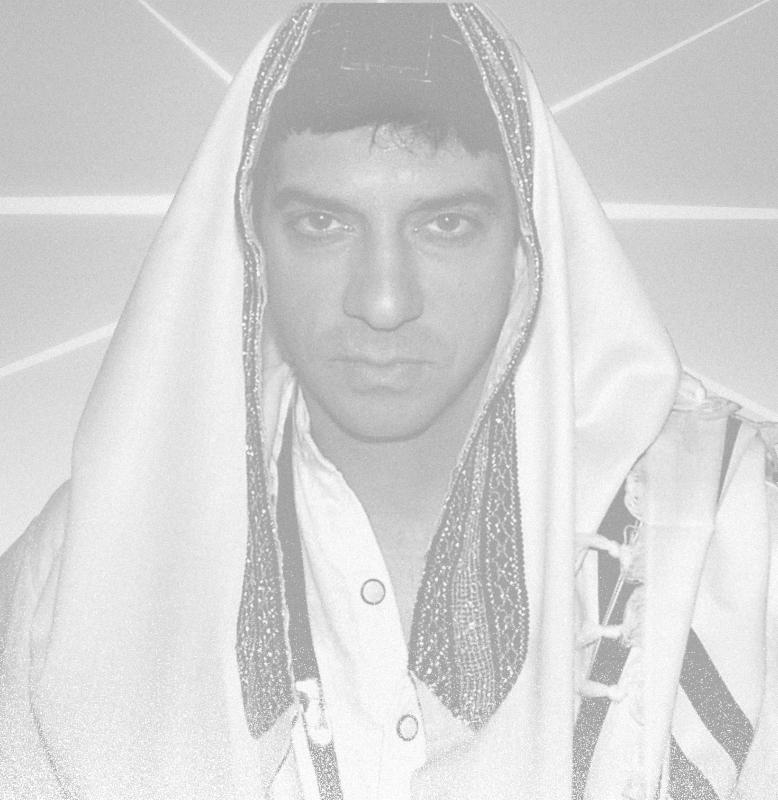 I experienced my first taste of yeshiva learning when I was a twenty-something wanna-be rock star in LA. After perusing an attractive brochure that appeared in the mail, I applied for the all-expenses-paid scholarship to study in Jerusalem. Aish HaTorah provided an incredible curriculum with a dozen brilliant rabbis that taught us hour by hour in an Ottoman Empire study hall perched atop the Old City walls. I considered the millennia-old alleyways comprising the “shuk” my personal playground and had the Western Wall as my front yard. The neophytes were never expected to join the yeshiva prayer services but since I had a fair grasp of the basics from Hebrew School I would often don my tallis (or tallit, meaning a prayer shawl) given to me at my Bar Mitzvah and join the minyan (prayer service.)
I experienced my first taste of yeshiva learning when I was a twenty-something wanna-be rock star in LA. After perusing an attractive brochure that appeared in the mail, I applied for the all-expenses-paid scholarship to study in Jerusalem. Aish HaTorah provided an incredible curriculum with a dozen brilliant rabbis that taught us hour by hour in an Ottoman Empire study hall perched atop the Old City walls. I considered the millennia-old alleyways comprising the “shuk” my personal playground and had the Western Wall as my front yard. The neophytes were never expected to join the yeshiva prayer services but since I had a fair grasp of the basics from Hebrew School I would often don my tallis (or tallit, meaning a prayer shawl) given to me at my Bar Mitzvah and join the minyan (prayer service.)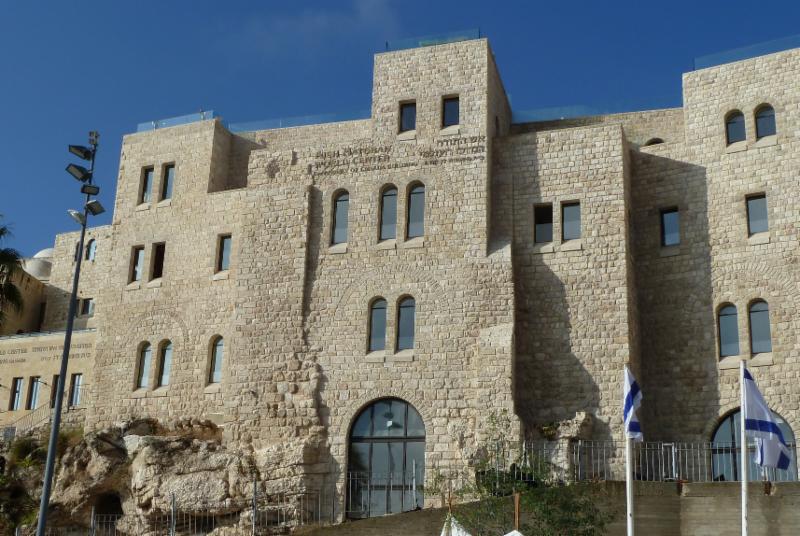 While touching the cool, ancient stones of the Wall, I prayed an abbreviated service on my own since I was already running late for lunch. How could I leave this magical place, this “Jewish Disneyland?” It felt like I had learned more in those four months than in four years at my university. But then there was also that feeling of homesickness, missing my family and longing for my beachside apartment. One by one, my rabbis pulled me aside to discourage me from going back to LA so soon. Particularly Rabbi Weinberg, my beloved Rosh Yeshiva. “C’mon Sam, give us a year,” he implored, looking at me with that trademark gleam in his eye.
While touching the cool, ancient stones of the Wall, I prayed an abbreviated service on my own since I was already running late for lunch. How could I leave this magical place, this “Jewish Disneyland?” It felt like I had learned more in those four months than in four years at my university. But then there was also that feeling of homesickness, missing my family and longing for my beachside apartment. One by one, my rabbis pulled me aside to discourage me from going back to LA so soon. Particularly Rabbi Weinberg, my beloved Rosh Yeshiva. “C’mon Sam, give us a year,” he implored, looking at me with that trademark gleam in his eye. My next connection with a tallis would be at my wedding seven years later. I sent my Israel-bound mom on a mission to purchase the tallis of my dreams. She returned with a simple black and white, super lightweight, extra large garment and “sold” it to my fiancé since the custom is for the wife to give the tallis to her new husband. That sunny Sunday afternoon we stretched it atop four poles and stood underneath as a cavalcade of seven illustrious LA rabbis gave us our blessings. Now whenever I wear it I feel the hug of my wife as well as the warmth of God’s “wings” holding me close.
My next connection with a tallis would be at my wedding seven years later. I sent my Israel-bound mom on a mission to purchase the tallis of my dreams. She returned with a simple black and white, super lightweight, extra large garment and “sold” it to my fiancé since the custom is for the wife to give the tallis to her new husband. That sunny Sunday afternoon we stretched it atop four poles and stood underneath as a cavalcade of seven illustrious LA rabbis gave us our blessings. Now whenever I wear it I feel the hug of my wife as well as the warmth of God’s “wings” holding me close.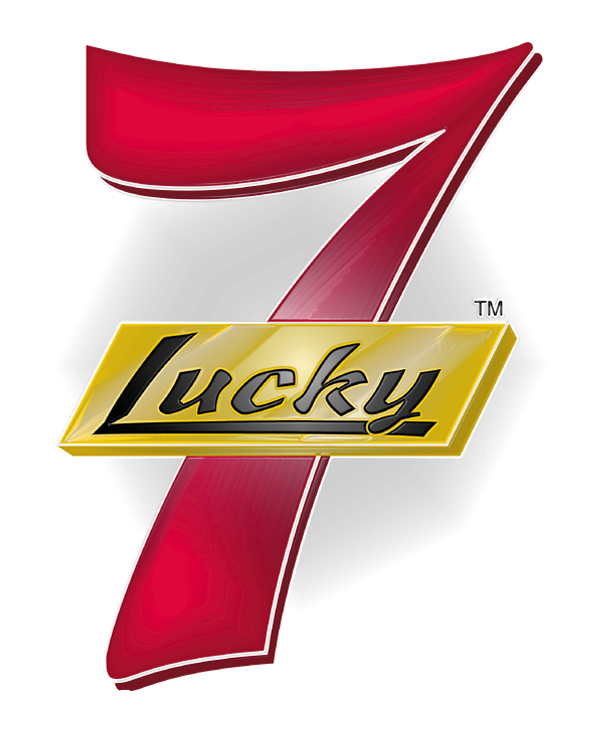 The matrix of the world is built on a system of “sevens.” During lunch today I asked my kids to figure out all the times seven appears in Judaism. We came up with over fifty! And yes, my daughter did check Google at one point. I started thinking about sevens recently at a neighborhood shiva call. Shiva (from the root sheva, or seven) is the week of intense mourning for a loved one and is typically shared by the whole community. Everyone gathers around the mourner for seven days of prayers, bringing them food and offering the solace of company and a listening ear. In this case, my friend Jeff Mann didn’t have much family…the community was his family and we all needed comforting. Another reason that this shiva stood out is that I was going straight from these somber minyans to “sheva brachot” celebrations for a friend’s raucous wedding that I had just played with my band. There’s that number seven again! At a wedding the bride circles the groom seven times and seven blessings are recited under the marital canopy. Then the couple celebrates for seven days with family and friends. During this strange week I danced a schizophrenic ballet from mourning and tears to table-pounding jubilation, nearly every night. Part of the joy and responsibility of living in a Jewish community is sharing lifecycle events, from birth to death. And all have that mysterious number seven at their core.
The matrix of the world is built on a system of “sevens.” During lunch today I asked my kids to figure out all the times seven appears in Judaism. We came up with over fifty! And yes, my daughter did check Google at one point. I started thinking about sevens recently at a neighborhood shiva call. Shiva (from the root sheva, or seven) is the week of intense mourning for a loved one and is typically shared by the whole community. Everyone gathers around the mourner for seven days of prayers, bringing them food and offering the solace of company and a listening ear. In this case, my friend Jeff Mann didn’t have much family…the community was his family and we all needed comforting. Another reason that this shiva stood out is that I was going straight from these somber minyans to “sheva brachot” celebrations for a friend’s raucous wedding that I had just played with my band. There’s that number seven again! At a wedding the bride circles the groom seven times and seven blessings are recited under the marital canopy. Then the couple celebrates for seven days with family and friends. During this strange week I danced a schizophrenic ballet from mourning and tears to table-pounding jubilation, nearly every night. Part of the joy and responsibility of living in a Jewish community is sharing lifecycle events, from birth to death. And all have that mysterious number seven at their core. I am writing this on a long, lazy Tisha B’av afternoon. The sky is brilliant blue and a gentle breeze is beckoning me to leave my air-conditioned studio and get on my bike. No, not today. I must conserve my energy and saliva. At my synagogue we have undertaken a dramatic journey using prayer, speakers and chanting of Kinnot, the anguished poetry of Jewish suffering through the ages. We sit on the floor, wearing wrinkled clothing and simple, non-leather shoes. We are unshaven and unkempt and no one cares. A custom particularly hard for this extrovert is not greeting friends. We acknowledge each other with a stare, realizing that this day is not about camaraderie, it’s about alienation and exile, death and mourning, dashed hopes and endless tears. Tisha B’av was once a universally observed commemoration of disaster befalling the Jewish People. It is now observed by perhaps 10% of the tribe. That in itself is reason to mourn.
I am writing this on a long, lazy Tisha B’av afternoon. The sky is brilliant blue and a gentle breeze is beckoning me to leave my air-conditioned studio and get on my bike. No, not today. I must conserve my energy and saliva. At my synagogue we have undertaken a dramatic journey using prayer, speakers and chanting of Kinnot, the anguished poetry of Jewish suffering through the ages. We sit on the floor, wearing wrinkled clothing and simple, non-leather shoes. We are unshaven and unkempt and no one cares. A custom particularly hard for this extrovert is not greeting friends. We acknowledge each other with a stare, realizing that this day is not about camaraderie, it’s about alienation and exile, death and mourning, dashed hopes and endless tears. Tisha B’av was once a universally observed commemoration of disaster befalling the Jewish People. It is now observed by perhaps 10% of the tribe. That in itself is reason to mourn. When I started out in music my primary motivation was to get my songs heard. That primal urge to offer shelter to the melodic offspring of my subconscious led me to open a recording studio, assemble bands, learn theory, practice the piano and take voice lessons. A byproduct of the career that this passion invoked is a desire to offer a path to young musicians who are wrestling with their musical inclinations. Establishing mentorship programs, music retreats and choral and instrumental ensembles is all part of this effort. As a militant music advocate I maintain that basic music education is a crucial part of any modern school curriculum. Somehow that truth seems lost on American administrators, especially in Jewish day schools. When something has to be cut to accommodate shrinking budgets it’s usually not math and English; presently music education in both public and private schools is MIA or at best, piecemeal.
When I started out in music my primary motivation was to get my songs heard. That primal urge to offer shelter to the melodic offspring of my subconscious led me to open a recording studio, assemble bands, learn theory, practice the piano and take voice lessons. A byproduct of the career that this passion invoked is a desire to offer a path to young musicians who are wrestling with their musical inclinations. Establishing mentorship programs, music retreats and choral and instrumental ensembles is all part of this effort. As a militant music advocate I maintain that basic music education is a crucial part of any modern school curriculum. Somehow that truth seems lost on American administrators, especially in Jewish day schools. When something has to be cut to accommodate shrinking budgets it’s usually not math and English; presently music education in both public and private schools is MIA or at best, piecemeal. (AJCF), Judy and her husband Mark picked me up and drove me straight to the festival venue so I could check out the piano and decide on any stage diagram changes. The Music Conservatorium is a modern, cutting-edge music academy with astonishing rehearsal and performance spaces and more grand pianos than I’ve seen under one roof. I was excited to see that I would have a perfectly tuned Steinway concert grand for my show. Pianos like that simply suck the notes out of my fingers. Playing them is effortless, with dynamics that range from floating through a wispy sky to crashing cumulo-nimbus thunder.
(AJCF), Judy and her husband Mark picked me up and drove me straight to the festival venue so I could check out the piano and decide on any stage diagram changes. The Music Conservatorium is a modern, cutting-edge music academy with astonishing rehearsal and performance spaces and more grand pianos than I’ve seen under one roof. I was excited to see that I would have a perfectly tuned Steinway concert grand for my show. Pianos like that simply suck the notes out of my fingers. Playing them is effortless, with dynamics that range from floating through a wispy sky to crashing cumulo-nimbus thunder. I launched on a shaded trail to a beautiful fishing spot in the middle of Sugarloaf Bay. I saw countless exotic birds including trees filled with brilliant parrots, rainbow lorikeets, cockatoos and these crazy crested pigeons. I felt like I was on the set of Avatar, and the complete solitude of the path made me a bit concerned that some wild Pandora beast would come raging through the fern undergrowth. At the terminus I watched a recently retired 51-year-old banker casting his reel for Australian Salmon. He said that they taste nowhere near as good as the Tasmanian variety. Over twenty years working for the same bank and this ex-executive was feeling like he was on the set of Groundhog Day. He felt he had barely escaped with his soul intact…fishing time! We had a relaxed schmooze for a few hours as I ate my bagel, lox and cream cheese Yom Tov seudah (festive meal.)
I launched on a shaded trail to a beautiful fishing spot in the middle of Sugarloaf Bay. I saw countless exotic birds including trees filled with brilliant parrots, rainbow lorikeets, cockatoos and these crazy crested pigeons. I felt like I was on the set of Avatar, and the complete solitude of the path made me a bit concerned that some wild Pandora beast would come raging through the fern undergrowth. At the terminus I watched a recently retired 51-year-old banker casting his reel for Australian Salmon. He said that they taste nowhere near as good as the Tasmanian variety. Over twenty years working for the same bank and this ex-executive was feeling like he was on the set of Groundhog Day. He felt he had barely escaped with his soul intact…fishing time! We had a relaxed schmooze for a few hours as I ate my bagel, lox and cream cheese Yom Tov seudah (festive meal.) walked until we couldn’t walk anymore, shot plenty of pictures that will likely not come out and then found one of the few establishments where this kosher consumer could eat. I sent sleepy Naomi home since I was fired up with energy to explore more of the town. Thanks to an excellent light rail system I felt perfectly confident that I could find my way back to Chatswood.
walked until we couldn’t walk anymore, shot plenty of pictures that will likely not come out and then found one of the few establishments where this kosher consumer could eat. I sent sleepy Naomi home since I was fired up with energy to explore more of the town. Thanks to an excellent light rail system I felt perfectly confident that I could find my way back to Chatswood. started the proceedings with a rousing havdalah and sing-along. Now I would be put to the test. The eighty candidates assembled had notebooks with several of my SATB arrangements. For the next sixty hours I would conduct the whole group in “Big Sing” rehearsals, form my own twenty-five voice Rock It Choir, teach workshops and give concerts both for the group and a gala show for the public. I must say that conducting the first song that Saturday night was nerve wracking. I started working on the parts section by section and soon surrendered to the joy of hearing my music sung. At first I waved my hands stiffly but then closed my eyes and “saw” their entrances in my heart rather than on the page. By the time we had my Blessing song down I felt enveloped in a sonorous angelic wind that responded to my every gesture. Wow.
started the proceedings with a rousing havdalah and sing-along. Now I would be put to the test. The eighty candidates assembled had notebooks with several of my SATB arrangements. For the next sixty hours I would conduct the whole group in “Big Sing” rehearsals, form my own twenty-five voice Rock It Choir, teach workshops and give concerts both for the group and a gala show for the public. I must say that conducting the first song that Saturday night was nerve wracking. I started working on the parts section by section and soon surrendered to the joy of hearing my music sung. At first I waved my hands stiffly but then closed my eyes and “saw” their entrances in my heart rather than on the page. By the time we had my Blessing song down I felt enveloped in a sonorous angelic wind that responded to my every gesture. Wow. The next full day had more of the same: choir performances, rehearsals and workshops, culminating in a concert that was staged mostly for our own group and friends. We all felt a combined sense of satisfaction and relief, amazed at what we were able to accomplish in two and a half brilliant days. I had made a personal commitment to be there 100% for the festival and did not attempt to sneak out when my presence wasn’t necessary. That said, when it ended, I left the final cocktail hour with a few of my choir members to enjoy the parts of Vivid Sydney that I had missed. One of the grand illuminated buildings we passed required a human conductor to set the pace for the extraordinary light show. We boarded a ferry and got an aquatic view of the Opera House and downtown ablaze with colors intensified by the reflections on the water. Then to Darling Harbor where a Bellagio hotel-style fountain display was paired with a holographic film projected on a wall of mist. Right in the middle of the show the rain came down but no one left! Hundreds of umbrellas immediately opened providing shelter for all. These Sydneyites come prepared! Half the crowd was Asian; I was told by a cab driver that their population has swollen to a half a million residents in recent years.
The next full day had more of the same: choir performances, rehearsals and workshops, culminating in a concert that was staged mostly for our own group and friends. We all felt a combined sense of satisfaction and relief, amazed at what we were able to accomplish in two and a half brilliant days. I had made a personal commitment to be there 100% for the festival and did not attempt to sneak out when my presence wasn’t necessary. That said, when it ended, I left the final cocktail hour with a few of my choir members to enjoy the parts of Vivid Sydney that I had missed. One of the grand illuminated buildings we passed required a human conductor to set the pace for the extraordinary light show. We boarded a ferry and got an aquatic view of the Opera House and downtown ablaze with colors intensified by the reflections on the water. Then to Darling Harbor where a Bellagio hotel-style fountain display was paired with a holographic film projected on a wall of mist. Right in the middle of the show the rain came down but no one left! Hundreds of umbrellas immediately opened providing shelter for all. These Sydneyites come prepared! Half the crowd was Asian; I was told by a cab driver that their population has swollen to a half a million residents in recent years. Tuesday was my one and only day off during this two week tour. I was excited for an extensive hiking tour of the renown Blue Mountains. Sure enough, I cranked open my floor to ceiling blinds to see that it was pouring rain. I caught the train to the North to meet Judy’s husband, sax man Mark Ginsburg at the Linfield station where we took shelter from the drizzle under the awning of an amazing coffee joint called Café Feoh. These Australians sure take their coffee seriously! When Sydney-based Cantor Shimon Farkas came to LA before Passover I offered to meet him at Coffee Bean. He said, “No, I’m going to take you to a place in Beverly Hills that serves REAL coffee.” Well, I was slowly becoming an aficionado and can safely say that that morning’s mocha was the best I’ve ever had. No sugar required! We walked back to Mark’s home while the clouds dissipated and played some groovy piano-soprano sax improvised meanderings and then boarded his zippy Audi Quattro for West Head. This would be a more coastal (and hopefully drier) version of the hike we originally planned. We wound through a gorgeous wilderness area taking care not set off any photo speed traps on the way. I wouldn’t survive a town with such tightly controlled traffic enforcement! We then embarked on a five-mile loop that followed bluffs to beaches and featured caves and ancient kitchens with aboriginal art.
Tuesday was my one and only day off during this two week tour. I was excited for an extensive hiking tour of the renown Blue Mountains. Sure enough, I cranked open my floor to ceiling blinds to see that it was pouring rain. I caught the train to the North to meet Judy’s husband, sax man Mark Ginsburg at the Linfield station where we took shelter from the drizzle under the awning of an amazing coffee joint called Café Feoh. These Australians sure take their coffee seriously! When Sydney-based Cantor Shimon Farkas came to LA before Passover I offered to meet him at Coffee Bean. He said, “No, I’m going to take you to a place in Beverly Hills that serves REAL coffee.” Well, I was slowly becoming an aficionado and can safely say that that morning’s mocha was the best I’ve ever had. No sugar required! We walked back to Mark’s home while the clouds dissipated and played some groovy piano-soprano sax improvised meanderings and then boarded his zippy Audi Quattro for West Head. This would be a more coastal (and hopefully drier) version of the hike we originally planned. We wound through a gorgeous wilderness area taking care not set off any photo speed traps on the way. I wouldn’t survive a town with such tightly controlled traffic enforcement! We then embarked on a five-mile loop that followed bluffs to beaches and featured caves and ancient kitchens with aboriginal art. synchronicity that left the audience breathless. I noted that the crowd was the best behaved that I had ever seen. No catcalls, no standing ovations, just polite, warm applause all night. I befriended the blokes around me and they made sure that I had a beverage at intermission and wouldn’t accept my money. After the show I walked along the waterfront to the Opera House bar where I met members of the Swiss thrash metal band Coroner who were on tour down under. No, I had never heard of them either. It’s remarkable what nice guys they were given that they blast death rock for slamdancing skinhead crowds as a matter of habit. I took the train to my hotel via the nightspot Kings Cross, the closest stop to Woolloomooloo. At this late hour, on a Tuesday night, there wasn’t much action except for hash-smoking backpackers lighting up outside their hostels. That night I turned on the TV for the first time. Plenty of Australian shows with amusing Australian commercials. Nice to see that there is significant broadcasting base of home-brew content and that Aussies are not dependent on Hollywood for entertainment. That said, most of the typical American fare could be found for those homesick for Yank accents.
synchronicity that left the audience breathless. I noted that the crowd was the best behaved that I had ever seen. No catcalls, no standing ovations, just polite, warm applause all night. I befriended the blokes around me and they made sure that I had a beverage at intermission and wouldn’t accept my money. After the show I walked along the waterfront to the Opera House bar where I met members of the Swiss thrash metal band Coroner who were on tour down under. No, I had never heard of them either. It’s remarkable what nice guys they were given that they blast death rock for slamdancing skinhead crowds as a matter of habit. I took the train to my hotel via the nightspot Kings Cross, the closest stop to Woolloomooloo. At this late hour, on a Tuesday night, there wasn’t much action except for hash-smoking backpackers lighting up outside their hostels. That night I turned on the TV for the first time. Plenty of Australian shows with amusing Australian commercials. Nice to see that there is significant broadcasting base of home-brew content and that Aussies are not dependent on Hollywood for entertainment. That said, most of the typical American fare could be found for those homesick for Yank accents.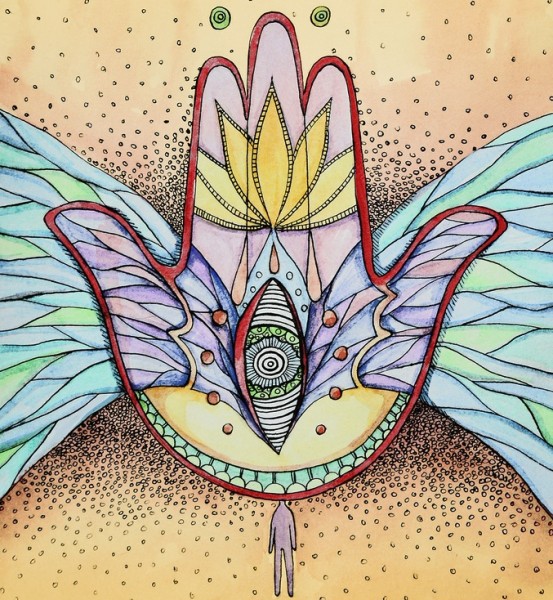 After fifty-six monthly newsletters featuring 2500 word essays, it should be no mystery to my regular readers that I am surreptitiously writing a book. When I get to newsletter number sixty I will have assembled nearly 150,000 words or 500 novel-sized pages. Looks like I have some editing to do! My goal is to get this project launched in 2015 and the working title is The Jewish Missionary Handbook. Yes, I realize this hints to Mormons and bedroom Olympics – but the fact is that the Mormons are a great example of tirelessly spreading the good news and sex sells books. I’m very passionate about getting this heartfelt message out there: I feel that North American Jewry has lost its “mission statement” and I intend to do my part to get us back on track. The following essay will serve more or less as the opening chapter.
After fifty-six monthly newsletters featuring 2500 word essays, it should be no mystery to my regular readers that I am surreptitiously writing a book. When I get to newsletter number sixty I will have assembled nearly 150,000 words or 500 novel-sized pages. Looks like I have some editing to do! My goal is to get this project launched in 2015 and the working title is The Jewish Missionary Handbook. Yes, I realize this hints to Mormons and bedroom Olympics – but the fact is that the Mormons are a great example of tirelessly spreading the good news and sex sells books. I’m very passionate about getting this heartfelt message out there: I feel that North American Jewry has lost its “mission statement” and I intend to do my part to get us back on track. The following essay will serve more or less as the opening chapter.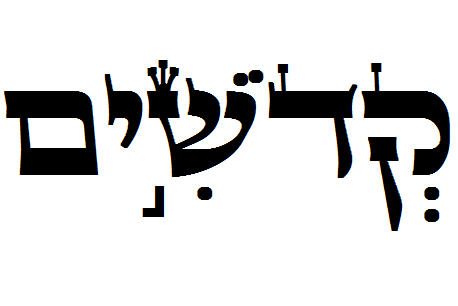 Leviticus sums up our core national aspiration. Everything else is commentary. While our sages debate exactly what this seemingly vague mitzvah might entail, the bottom line stems from the ending of the sentence: “for I, God, your God, am holy”. Put simply, we are to strive to be God-like in our behavior. Every circumstance is a “choose life” moment, a divinely orchestrated series of situations in which we are challenged to choose wisely. In other words, “What would Moses do?” is the question to keep on our tongues.
Leviticus sums up our core national aspiration. Everything else is commentary. While our sages debate exactly what this seemingly vague mitzvah might entail, the bottom line stems from the ending of the sentence: “for I, God, your God, am holy”. Put simply, we are to strive to be God-like in our behavior. Every circumstance is a “choose life” moment, a divinely orchestrated series of situations in which we are challenged to choose wisely. In other words, “What would Moses do?” is the question to keep on our tongues.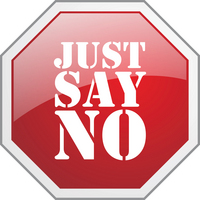 The key to holiness is abstention. In truth, abstention sounds like a bummer. Who wants to be a party pooper? It’s clear, however, that the greatest rewards in life are gained through abstention. Marital bliss and the resulting gift of children can only take place when one abstains from extramarital affairs. Accessing the deepest potential of the Sabbath and holidays requires a long list of abstentions. In fact, the way we celebrate is largely framed in the negative by the things we CANNOT do. We then fill the empty space that remains with nurturing activities like prayer, long meals and family time that otherwise wouldn’t be possible. God seems to be teaching us the invaluable lesson that most worthwhile endeavors involve postponing immediate gratification for a brighter future. I’m reminded of the research study wherein children tempted with delicious marshmallows would receive extra ones if they could wait. The kids were tracked throughout their lives and those who were able to abstain from the treats for a certain period of time were the most successful in life.
The key to holiness is abstention. In truth, abstention sounds like a bummer. Who wants to be a party pooper? It’s clear, however, that the greatest rewards in life are gained through abstention. Marital bliss and the resulting gift of children can only take place when one abstains from extramarital affairs. Accessing the deepest potential of the Sabbath and holidays requires a long list of abstentions. In fact, the way we celebrate is largely framed in the negative by the things we CANNOT do. We then fill the empty space that remains with nurturing activities like prayer, long meals and family time that otherwise wouldn’t be possible. God seems to be teaching us the invaluable lesson that most worthwhile endeavors involve postponing immediate gratification for a brighter future. I’m reminded of the research study wherein children tempted with delicious marshmallows would receive extra ones if they could wait. The kids were tracked throughout their lives and those who were able to abstain from the treats for a certain period of time were the most successful in life. backflips.” Some claim that this system is archaic, valid only in biblical times or that Judaism today is a vestigial rabbinic construct. I’d like to argue that more than ever these principles are crucial for understanding the world, staying married, staying in shape, taking a weekly break from technology/media and igniting our imperiled national spark.
backflips.” Some claim that this system is archaic, valid only in biblical times or that Judaism today is a vestigial rabbinic construct. I’d like to argue that more than ever these principles are crucial for understanding the world, staying married, staying in shape, taking a weekly break from technology/media and igniting our imperiled national spark.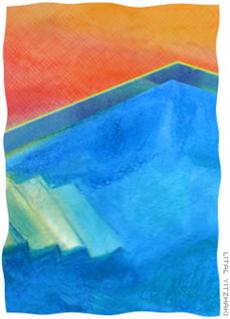 much more to it; our rabbis have instituted a system of fences to keep us from trampling on the mitzvot and enhance our chances of successfully accomplishing “sur meyrah.” These fences are an integral part of halacha and negotiating them requires learning the nuances with a qualified rabbi. “Sur meyrah v’asey tov” also informs the teshuva (return) experience…until we stop the mistake we are making, only then can we apologize and resolve not to repeat it. I immerse in a mikvah before Shabbat each week and it is upon these words that I meditate while underwater.
much more to it; our rabbis have instituted a system of fences to keep us from trampling on the mitzvot and enhance our chances of successfully accomplishing “sur meyrah.” These fences are an integral part of halacha and negotiating them requires learning the nuances with a qualified rabbi. “Sur meyrah v’asey tov” also informs the teshuva (return) experience…until we stop the mistake we are making, only then can we apologize and resolve not to repeat it. I immerse in a mikvah before Shabbat each week and it is upon these words that I meditate while underwater. enlighten non-Jewish families about shalom bayit (peace in the home.) An unbroken chain of Jewish Federal Reserve chairmen keeps the world economy afloat. Now if we would just learn how to get along as a People, we could truly teach the world about peace. I have found that the most successful members of clergy (in all Jewish denominations) are those that eshew the ivory tower in order to get in the trenches helping congregants do mitzvot. We have tolerated enough Pew reports and population studies to see that promoting Judaism removed from mitzvot and the resulting gift of holiness is like trying to animate a body without a spine. Rabbi Shlomo Carlebach used to say that kids are leaving synagogues not because they don’t want religion, but because they DO want religion. Jewish unity is the final cornerstone of our grand mission and I believe we won’t find that elusive unity until we learn to celebrate our differences and rally around Torah.
enlighten non-Jewish families about shalom bayit (peace in the home.) An unbroken chain of Jewish Federal Reserve chairmen keeps the world economy afloat. Now if we would just learn how to get along as a People, we could truly teach the world about peace. I have found that the most successful members of clergy (in all Jewish denominations) are those that eshew the ivory tower in order to get in the trenches helping congregants do mitzvot. We have tolerated enough Pew reports and population studies to see that promoting Judaism removed from mitzvot and the resulting gift of holiness is like trying to animate a body without a spine. Rabbi Shlomo Carlebach used to say that kids are leaving synagogues not because they don’t want religion, but because they DO want religion. Jewish unity is the final cornerstone of our grand mission and I believe we won’t find that elusive unity until we learn to celebrate our differences and rally around Torah.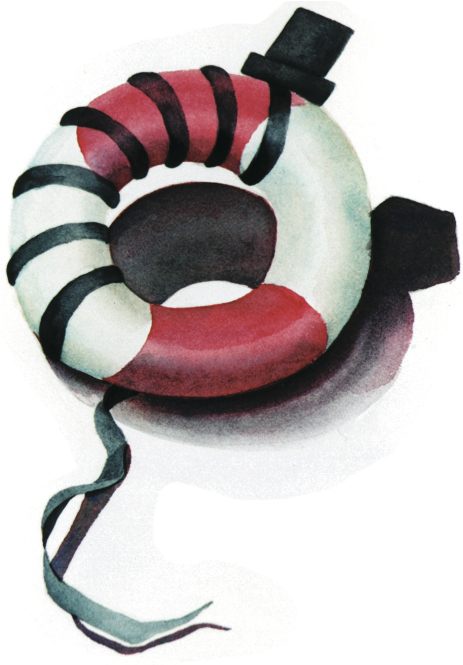 My first exposure to tefillin was in a basement workshop of a holy sofer (scribe) in Jerusalem. I was in Israel for my Bar Mitzvah; a lucky Brentwood, CA boy whose parents opted not only for an LA celebration but also for a meaningful few weeks touring the Promised Land. The culmination of the experience was a second Bar Mitzvah service at the Western Wall where I read Torah at the spiritual “ground zero” of our planet and forged an unbreakable bond with Israel and my people. I remember my new tefillin straps feeling sharp and rough; it would be months before the leather would soften and feel comfortable on my skin. After this trip my father made a point of praying with me in his rich, walnut-lined study in the mornings before school, allowing for quality father-son time and ensuring that my tefillin would actually get some use.
My first exposure to tefillin was in a basement workshop of a holy sofer (scribe) in Jerusalem. I was in Israel for my Bar Mitzvah; a lucky Brentwood, CA boy whose parents opted not only for an LA celebration but also for a meaningful few weeks touring the Promised Land. The culmination of the experience was a second Bar Mitzvah service at the Western Wall where I read Torah at the spiritual “ground zero” of our planet and forged an unbreakable bond with Israel and my people. I remember my new tefillin straps feeling sharp and rough; it would be months before the leather would soften and feel comfortable on my skin. After this trip my father made a point of praying with me in his rich, walnut-lined study in the mornings before school, allowing for quality father-son time and ensuring that my tefillin would actually get some use.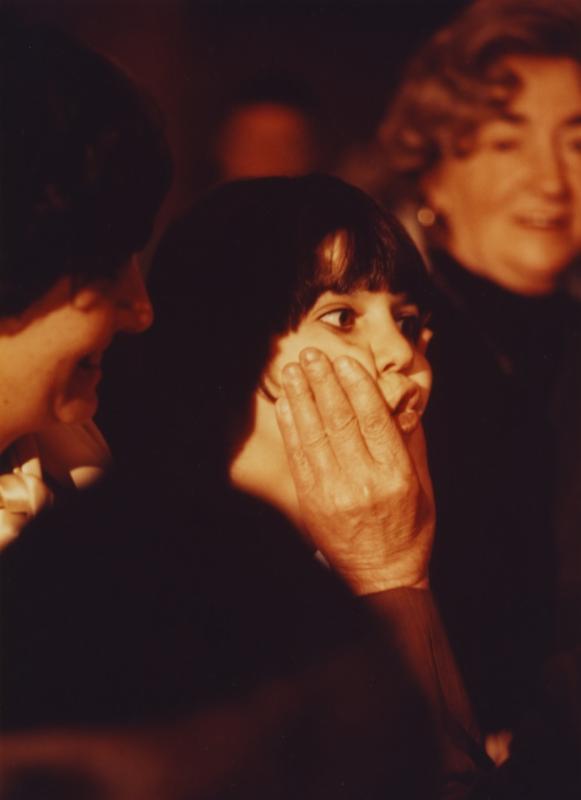 priorities were fitting in at public school, skiing, biking and surfing and playing with my band. I was proud to be Jewish and enjoyed family Friday Night dinners, but my tefillin were relegated to a dark closet never to see the light of day.
priorities were fitting in at public school, skiing, biking and surfing and playing with my band. I was proud to be Jewish and enjoyed family Friday Night dinners, but my tefillin were relegated to a dark closet never to see the light of day.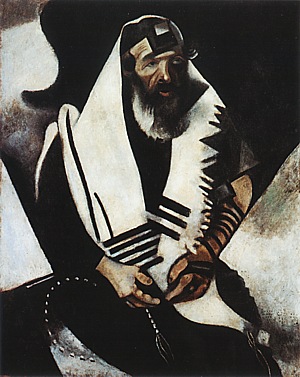 Phillip concluded that I should further investigate this side of my personality and perhaps it would bear some fruit. When I asked how I might do that he suggested that I choose a mitzvah and make it my own. We pondered the alternatives and he then asked if I had ever wrapped tefillin. “Yes,” I replied, “I have a pair that I received for my Bar Mitzvah.” Phillip told me to try putting them on and using this spiritual activity as a way to remember the connection I felt in Israel. Upon returning home weeks went by before I made it over to my parent’s house and found the aged leather in the exact place where it had been left sixteen years earlier. The next morning in my beachside apartment I tried to put them on. I had very little recollection of how to tie the straps or utter the appropriate blessings. I did know enough once I got them on that it was a good time to say the Sh’ma and V’ahavta, to thank God for the blessings in my life and ponder my connection with my heritage.
Phillip concluded that I should further investigate this side of my personality and perhaps it would bear some fruit. When I asked how I might do that he suggested that I choose a mitzvah and make it my own. We pondered the alternatives and he then asked if I had ever wrapped tefillin. “Yes,” I replied, “I have a pair that I received for my Bar Mitzvah.” Phillip told me to try putting them on and using this spiritual activity as a way to remember the connection I felt in Israel. Upon returning home weeks went by before I made it over to my parent’s house and found the aged leather in the exact place where it had been left sixteen years earlier. The next morning in my beachside apartment I tried to put them on. I had very little recollection of how to tie the straps or utter the appropriate blessings. I did know enough once I got them on that it was a good time to say the Sh’ma and V’ahavta, to thank God for the blessings in my life and ponder my connection with my heritage.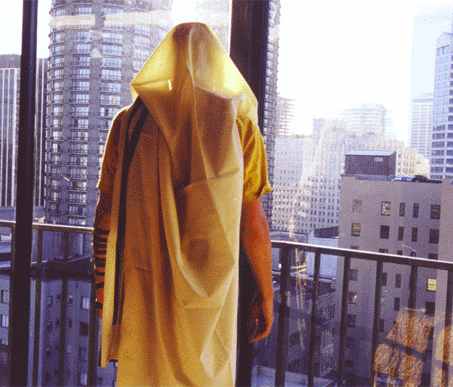 a much greater degree of intimacy that can only be compared to the covenant of marriage: When we wind them around our fingers we utter the betrothal passage of Hoshea that is often recited at marriage ceremonies. For me, tefillin represent a daily “chuppah” moment just like at Mount Sinai, where I get to participate in a loving embrace of my “partner” in creation.
a much greater degree of intimacy that can only be compared to the covenant of marriage: When we wind them around our fingers we utter the betrothal passage of Hoshea that is often recited at marriage ceremonies. For me, tefillin represent a daily “chuppah” moment just like at Mount Sinai, where I get to participate in a loving embrace of my “partner” in creation.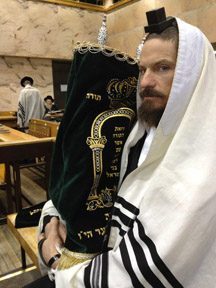 These days I wear my tefillin wherever I wander. I find that I am often in airports or on the rooftops of hotels looking for a quiet corner to strap up and say my morning prayers. I know it appears strange to onlookers but laying tefillin makes a definitive statement: “I’m Jewish, this is what we do, thanks for respecting our differences.” I welcome the questions that often ensue. When I’m not in the synagogue, I have a favorite spot on my east-facing porch where I am greeted with the warm morning light, flitting hummingbirds and the perfume of jasmine. With my own kids I am relaxed with pushing them to get to a minyan on Shabbat, but I consider the wearing of tefillin every weekday inviolate. Their willingness to do this mitzvah is a prerequisite to participating in our family vacations or any activities on Sundays. Thankfully they get it, largely because they see me doing it and they intuit the importance of consistency. Hopefully it’s more than guilt that motivates them…they have their own loving relationship with God…why mess that up? As Woody Allen says, “80% of life is showing up.” I believe that faithful behavior like a daily appointment with one’s tefillin elevates elusive faith into the realm of knowledge.
These days I wear my tefillin wherever I wander. I find that I am often in airports or on the rooftops of hotels looking for a quiet corner to strap up and say my morning prayers. I know it appears strange to onlookers but laying tefillin makes a definitive statement: “I’m Jewish, this is what we do, thanks for respecting our differences.” I welcome the questions that often ensue. When I’m not in the synagogue, I have a favorite spot on my east-facing porch where I am greeted with the warm morning light, flitting hummingbirds and the perfume of jasmine. With my own kids I am relaxed with pushing them to get to a minyan on Shabbat, but I consider the wearing of tefillin every weekday inviolate. Their willingness to do this mitzvah is a prerequisite to participating in our family vacations or any activities on Sundays. Thankfully they get it, largely because they see me doing it and they intuit the importance of consistency. Hopefully it’s more than guilt that motivates them…they have their own loving relationship with God…why mess that up? As Woody Allen says, “80% of life is showing up.” I believe that faithful behavior like a daily appointment with one’s tefillin elevates elusive faith into the realm of knowledge. caves inhabited by giant sea turtles. Following our explorations we scaled the cliff back to the parking lot and went back to their car so that my son and I could daven with tefillin. Time was of the essence since they had to get back down south before Shabbat came in. Just as I strapped up, a warm Hawaiian drizzle started to fall. To avoid getting my friend’s tefillin wet we all dashed into the alcove of one of the condos and shared an animated communal mincha (afternoon) prayer session.
caves inhabited by giant sea turtles. Following our explorations we scaled the cliff back to the parking lot and went back to their car so that my son and I could daven with tefillin. Time was of the essence since they had to get back down south before Shabbat came in. Just as I strapped up, a warm Hawaiian drizzle started to fall. To avoid getting my friend’s tefillin wet we all dashed into the alcove of one of the condos and shared an animated communal mincha (afternoon) prayer session.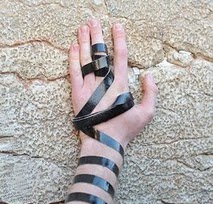 Wearing my tefillin on a daily basis has been nothing other than a window to perceive the daily miracles in my life. Thanks to this discipline I have a regular rendezvous with the Almighty that is fulfilling and unshakeable. Ensuring that I never miss this appointment has created some truly memorable moments. I’m also reminded of the power of an encouraging word: just like my mentor on that Israel program gave me the idea of tefillin as a way to connect my trip to further spiritual growth, so too do I try to offer similar suggestions to those with open hearts whom I encounter. Finally, tefillin offer access to the deepest realms of the soul: a connection of mind, body and heart, a binding of servant to master and a daily reenactment of our sacred marriage with the Creator of the Universe.
Wearing my tefillin on a daily basis has been nothing other than a window to perceive the daily miracles in my life. Thanks to this discipline I have a regular rendezvous with the Almighty that is fulfilling and unshakeable. Ensuring that I never miss this appointment has created some truly memorable moments. I’m also reminded of the power of an encouraging word: just like my mentor on that Israel program gave me the idea of tefillin as a way to connect my trip to further spiritual growth, so too do I try to offer similar suggestions to those with open hearts whom I encounter. Finally, tefillin offer access to the deepest realms of the soul: a connection of mind, body and heart, a binding of servant to master and a daily reenactment of our sacred marriage with the Creator of the Universe. The other night over tofu curry my wife was explaining the concept of fiscal vs. calendar years to my kids. Times they are a-changing: my seventeen-year-old Jesse just opened his own E-Trade account so that he can play the market on his own. He used to hunt bugs in the backyard; now he’s studying corporate cash flow! She told him that most individuals in the US seem to follow the January to December calendar model, making January the back to work month following a holiday vacation and a drunken New Years Eve. My dad’s swimwear business went summer to summer since we shipped everything by May and then had to figure out what to do the next season.
The other night over tofu curry my wife was explaining the concept of fiscal vs. calendar years to my kids. Times they are a-changing: my seventeen-year-old Jesse just opened his own E-Trade account so that he can play the market on his own. He used to hunt bugs in the backyard; now he’s studying corporate cash flow! She told him that most individuals in the US seem to follow the January to December calendar model, making January the back to work month following a holiday vacation and a drunken New Years Eve. My dad’s swimwear business went summer to summer since we shipped everything by May and then had to figure out what to do the next season. began with overt miracles to God’s working subtly behind the scene. Imagine that you are imprisoned and have a prison guard right outside the cell. Obviously with the watchful guard on the scene you are on your best behavior. When the guard goes on rounds, however, that’s when you can do headstands, scrawl graffiti or go back to digging that escape hole with a spoon. The God of Nissan is an overwhelming presence that limits our freedom of choice, whereas the God of Adar gives us the space to express the fullness of our human gift of choice. I believe that all history is following this same principle and more than ever we live in age where we are stratified into believers and “secular.” That intelligent people can deny God’s presence fills me with mirth. Just look at how powerful God is, like the guard on his rounds, giving us the freedom to perceive God, or not. Amazing!
began with overt miracles to God’s working subtly behind the scene. Imagine that you are imprisoned and have a prison guard right outside the cell. Obviously with the watchful guard on the scene you are on your best behavior. When the guard goes on rounds, however, that’s when you can do headstands, scrawl graffiti or go back to digging that escape hole with a spoon. The God of Nissan is an overwhelming presence that limits our freedom of choice, whereas the God of Adar gives us the space to express the fullness of our human gift of choice. I believe that all history is following this same principle and more than ever we live in age where we are stratified into believers and “secular.” That intelligent people can deny God’s presence fills me with mirth. Just look at how powerful God is, like the guard on his rounds, giving us the freedom to perceive God, or not. Amazing!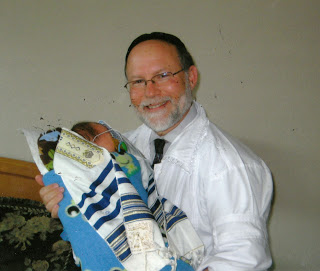 In order for the Jewish People to have a fighting chance at survival we need to connect with nachas. Nachas is the simple feeling of satisfaction when connecting Jewishly. It is a uniquely Jewish sensation and is therefore tough to define for those outside of the tribe. All Jews have had nachas moments. Usually at lifecycle events when we perceive that thanks to this event, all will be well for the Jewish future. Brises, baby-namings, Bar/Bat mitzvahs and Jewish weddings are all nachas moments. Nachas isn’t quite pride, although that’s a big part of it. All parents swell up with pride when a kid has an accomplishment in the world. But a pride moment is an A on an algebra test or passing the Bar Exam. A nachas moment is when that kid can read Hebrew well enough to be called to the Torah. Or when a bride and groom exchange vows under a chuppah. Nachas involves continuity. When the synagogues and federations around the world worry about connecting with the next generation, what they are really saying is that they are concerned about nachas.
In order for the Jewish People to have a fighting chance at survival we need to connect with nachas. Nachas is the simple feeling of satisfaction when connecting Jewishly. It is a uniquely Jewish sensation and is therefore tough to define for those outside of the tribe. All Jews have had nachas moments. Usually at lifecycle events when we perceive that thanks to this event, all will be well for the Jewish future. Brises, baby-namings, Bar/Bat mitzvahs and Jewish weddings are all nachas moments. Nachas isn’t quite pride, although that’s a big part of it. All parents swell up with pride when a kid has an accomplishment in the world. But a pride moment is an A on an algebra test or passing the Bar Exam. A nachas moment is when that kid can read Hebrew well enough to be called to the Torah. Or when a bride and groom exchange vows under a chuppah. Nachas involves continuity. When the synagogues and federations around the world worry about connecting with the next generation, what they are really saying is that they are concerned about nachas.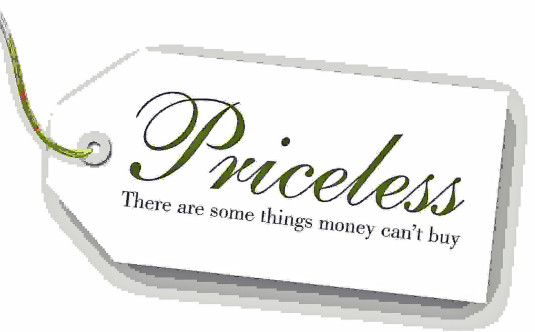 concierge tour of Israel who seemed to have the best of everything. He had recently been divorced from his non-Jewish wife and was rediscovering his roots. I sensed there was an emptiness that he was trying to fill with this short visit to the Holy Land. My rabbi brother turned to me and said, “He has everything except nachas.” Money can’t buy nachas. It’s a human pleasure on a higher plateau, up there with love, power, divine connection. Nachas takes investment, sacrifice and wisdom. In Jewish life, it’s not “he who dies with the most toys wins.” Go to any Jewish funeral; we don’t do roasts or talk about real estate acquisitions. Those properly eulogizing the dead are talking about nachas moments, the impact he or she had on loved ones, acts of charity and loving-kindness.
concierge tour of Israel who seemed to have the best of everything. He had recently been divorced from his non-Jewish wife and was rediscovering his roots. I sensed there was an emptiness that he was trying to fill with this short visit to the Holy Land. My rabbi brother turned to me and said, “He has everything except nachas.” Money can’t buy nachas. It’s a human pleasure on a higher plateau, up there with love, power, divine connection. Nachas takes investment, sacrifice and wisdom. In Jewish life, it’s not “he who dies with the most toys wins.” Go to any Jewish funeral; we don’t do roasts or talk about real estate acquisitions. Those properly eulogizing the dead are talking about nachas moments, the impact he or she had on loved ones, acts of charity and loving-kindness. we make are a small price to pay for the rewards of nurturing Jewishly alive offspring. We’re “paying it forward,” laying the seeds for the future joy of our own kid’s Jewish grandchildren, God willing. Thanks to my prodigious frequent flyer miles we just returned from a two-week family vacation in Israel to visit our oldest son Max who is spending a year learning in yeshiva. He showed up at Ben Gurion airport to pick us up on a Friday afternoon already decked out in his form-fitting Shabbas suit. Clean cut, tanned, in top shape (thanks to the yeshiva gym) and with tzitzit dangling. Can you imagine my slack-jawed, overwhelming rush of nachas?
we make are a small price to pay for the rewards of nurturing Jewishly alive offspring. We’re “paying it forward,” laying the seeds for the future joy of our own kid’s Jewish grandchildren, God willing. Thanks to my prodigious frequent flyer miles we just returned from a two-week family vacation in Israel to visit our oldest son Max who is spending a year learning in yeshiva. He showed up at Ben Gurion airport to pick us up on a Friday afternoon already decked out in his form-fitting Shabbas suit. Clean cut, tanned, in top shape (thanks to the yeshiva gym) and with tzitzit dangling. Can you imagine my slack-jawed, overwhelming rush of nachas?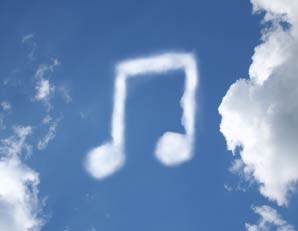 to spiritual Jewish music! In your car, on your ipod, on your couch. There are hundreds of amazing artists out there with songs that will nourish your soul and connect you deeply with your own Jewish journey. Jewish music bolsters feelings of unity with the Jewish People and our Creator. Music can make you sing and dance…it is the antidote to lethargy and hopelessness. In fact, music is often the transport medium of nachas. At my own wedding, one of my friends helped settle my nerves by advising me to sum up all my needs and concerns with one simple prayer under the chuppah: that I be able to give God nachas. May we all have lifecycle events filled with sweet song and abundant nachas. May we all serve God with joy and merit a speedy redemption for our troubled world.
to spiritual Jewish music! In your car, on your ipod, on your couch. There are hundreds of amazing artists out there with songs that will nourish your soul and connect you deeply with your own Jewish journey. Jewish music bolsters feelings of unity with the Jewish People and our Creator. Music can make you sing and dance…it is the antidote to lethargy and hopelessness. In fact, music is often the transport medium of nachas. At my own wedding, one of my friends helped settle my nerves by advising me to sum up all my needs and concerns with one simple prayer under the chuppah: that I be able to give God nachas. May we all have lifecycle events filled with sweet song and abundant nachas. May we all serve God with joy and merit a speedy redemption for our troubled world. Observant Jews can fly under the radar most of the time if they so choose. There is no law that states one must dress like a Chassid; one can wear a baseball hat, jeans and sneakers and blend. The only day that’s problematic is Shabbat. For the uninitiated, Sabbath observance seems strange at best, alien at worst. During weekdays, however, other than making sure kosher food is on hand, we can appear just like the Joneses next door. That is, until we start to make blessings.
Observant Jews can fly under the radar most of the time if they so choose. There is no law that states one must dress like a Chassid; one can wear a baseball hat, jeans and sneakers and blend. The only day that’s problematic is Shabbat. For the uninitiated, Sabbath observance seems strange at best, alien at worst. During weekdays, however, other than making sure kosher food is on hand, we can appear just like the Joneses next door. That is, until we start to make blessings. wasn’t long before I began to tackle the after-blessings. Thanks to my Conservative upbringing I was well acquainted with Birkat Hamazon in all its melodic glory. Somehow I had never been taught that this lengthy prayer/song was necessary only if one had consumed bread. Thankfully the after-blessings for most other foods are far shorter and easily learned and before long, just by making a habit of saying them at the appropriate time, I had them memorized.
wasn’t long before I began to tackle the after-blessings. Thanks to my Conservative upbringing I was well acquainted with Birkat Hamazon in all its melodic glory. Somehow I had never been taught that this lengthy prayer/song was necessary only if one had consumed bread. Thankfully the after-blessings for most other foods are far shorter and easily learned and before long, just by making a habit of saying them at the appropriate time, I had them memorized.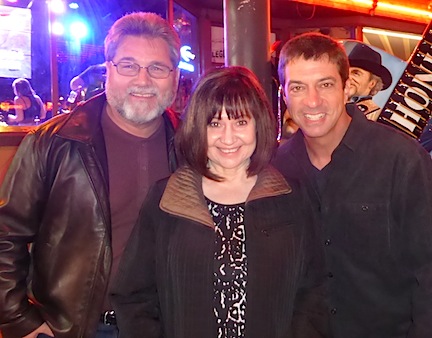 Last month I had some wonderful fans spend several days with me on the road. They drove from their hometown to see a show and had me return my rental car so that they could drive me to the next two towns on my itinerary. That way they heard three concerts and it gave us several hours to bond. Having them with me gave me fresh incentive to vary the songs in my set list just so they wouldn’t get bored! Inevitably, blessings were the first topic of conversation. After all, I kept lapsing into brachot and looking at them funny if I didn’t get an amen. As we rolled down the highway I helped them commit to memory the whole system of blessings and we laughed together as they slowly improved.
Last month I had some wonderful fans spend several days with me on the road. They drove from their hometown to see a show and had me return my rental car so that they could drive me to the next two towns on my itinerary. That way they heard three concerts and it gave us several hours to bond. Having them with me gave me fresh incentive to vary the songs in my set list just so they wouldn’t get bored! Inevitably, blessings were the first topic of conversation. After all, I kept lapsing into brachot and looking at them funny if I didn’t get an amen. As we rolled down the highway I helped them commit to memory the whole system of blessings and we laughed together as they slowly improved. humored by her rants. Before we left her company I gave her a blessing and sang her a song that I customized for her on the spot. She joined in the chorus and promised that we would be lifelong friends. What was an annoyance for my friend was a source of mirth for me. I try to allow myself to be swept along in a continuous series of opportunities, much like Ferris Buehler on a continuous day off. My brother Yom Tov refers to this outlook as, “rather than seeing the world as a jungle, it’s a jungle gym.” Just like I make blessings over my food and extraordinary events, I can offer blessings to others, even strangers on the beach. I feel that blessings can lift us into a parallel universe, one of constant connection and gratitude to our Creator and all living things.
humored by her rants. Before we left her company I gave her a blessing and sang her a song that I customized for her on the spot. She joined in the chorus and promised that we would be lifelong friends. What was an annoyance for my friend was a source of mirth for me. I try to allow myself to be swept along in a continuous series of opportunities, much like Ferris Buehler on a continuous day off. My brother Yom Tov refers to this outlook as, “rather than seeing the world as a jungle, it’s a jungle gym.” Just like I make blessings over my food and extraordinary events, I can offer blessings to others, even strangers on the beach. I feel that blessings can lift us into a parallel universe, one of constant connection and gratitude to our Creator and all living things. times for the after-blessing of each food group so that we would retain a state of gratitude even though we were happy and our bellies full. What a life lesson this is! This system of blessings gets us in the habit of remembering God in the bad times AND the good times. We don’t wait for a tragedy, God forbid, to initiate a relationship. When we are satisfied, happy, content with our lot, THAT is best time to share our lives with God.
times for the after-blessing of each food group so that we would retain a state of gratitude even though we were happy and our bellies full. What a life lesson this is! This system of blessings gets us in the habit of remembering God in the bad times AND the good times. We don’t wait for a tragedy, God forbid, to initiate a relationship. When we are satisfied, happy, content with our lot, THAT is best time to share our lives with God. During the month of Kislev the Jewish People celebrate the victory of the Maccabees, a brave troop of warriors that vanquished the mighty Syrian-Greeks. For millennia, as winter sweeps the Northern Hemisphere and the days grow shorter, the eight days of Chanukah salute those who keep the dream of freedom and justice alive in spite of overwhelming odds. Interestingly, the Torah portions that we read at this time of the year also highlight dreamers; we learn about the visions of our Patriarch Jacob and his son Joseph, followed by Pharaoh’s butler and baker and then Pharaoh himself. Clearly this resounding theme of the power of dreams, of hope amidst darkness, serves to lift our spirits and remind us that “not by might but by spirit” shall we all live in peace.
During the month of Kislev the Jewish People celebrate the victory of the Maccabees, a brave troop of warriors that vanquished the mighty Syrian-Greeks. For millennia, as winter sweeps the Northern Hemisphere and the days grow shorter, the eight days of Chanukah salute those who keep the dream of freedom and justice alive in spite of overwhelming odds. Interestingly, the Torah portions that we read at this time of the year also highlight dreamers; we learn about the visions of our Patriarch Jacob and his son Joseph, followed by Pharaoh’s butler and baker and then Pharaoh himself. Clearly this resounding theme of the power of dreams, of hope amidst darkness, serves to lift our spirits and remind us that “not by might but by spirit” shall we all live in peace.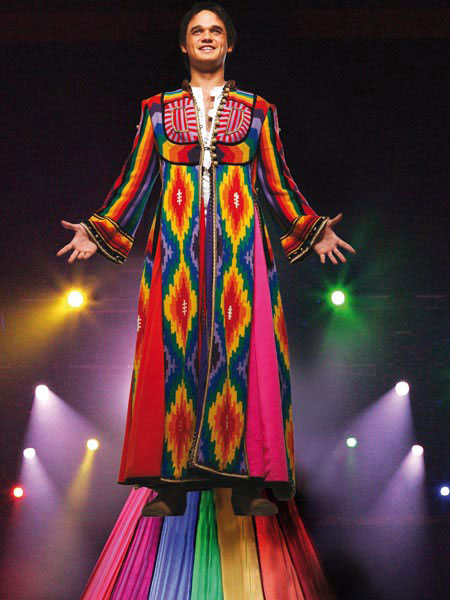 self-absorbed and perhaps too aware of his external beauty, having been spoiled by the attention lavished upon him by his doting parents. He not only dreams that he is being bowed down to, but he enthusiastically shares those visions with those who would do the bowing. Soon disaster strikes in the form of near murder at the hands of his “brothers,” being sold into slavery, temptation, imprisonment and abandonment. Joseph’s transformation from narcissist to altruist can be observed when he manages to notice the forlorn expressions of his fellow prisoners one particular day. Chances are that no one was jumping for joy in the Pharaoh’s dungeons. But Joseph is sensitive enough to perceive the change in demeanor on the faces of the butler and baker, and by attempting to come to their aid by interpreting their dreams, sets the forces of redemption in motion. Jacob/Yisrael recaptures the mantle of the ephemeral during his exile and Joseph’s development of altruism in his exile sets the stage for the formation of the Jewish People in Egypt and their miraculous exodus.
self-absorbed and perhaps too aware of his external beauty, having been spoiled by the attention lavished upon him by his doting parents. He not only dreams that he is being bowed down to, but he enthusiastically shares those visions with those who would do the bowing. Soon disaster strikes in the form of near murder at the hands of his “brothers,” being sold into slavery, temptation, imprisonment and abandonment. Joseph’s transformation from narcissist to altruist can be observed when he manages to notice the forlorn expressions of his fellow prisoners one particular day. Chances are that no one was jumping for joy in the Pharaoh’s dungeons. But Joseph is sensitive enough to perceive the change in demeanor on the faces of the butler and baker, and by attempting to come to their aid by interpreting their dreams, sets the forces of redemption in motion. Jacob/Yisrael recaptures the mantle of the ephemeral during his exile and Joseph’s development of altruism in his exile sets the stage for the formation of the Jewish People in Egypt and their miraculous exodus.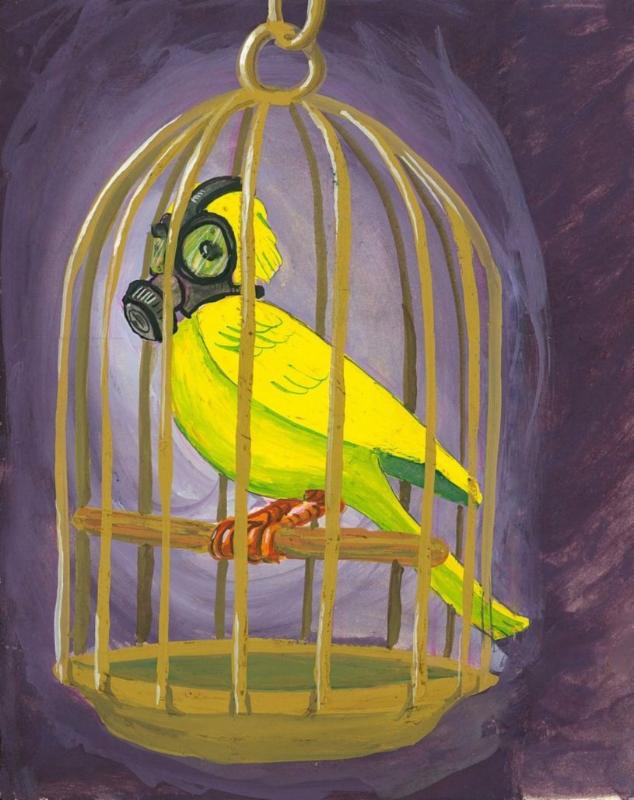 of despots and tyrants. We are a global, spiritual tsunami warning system, spread out by our Creator to the four corners of the earth to warn, teach and uplift our neighbors. I find it refreshing to see the current phenomenon of Righteous Gentiles taking a stand to protect Israel from her enemies. I believe the civilized world is waking up to fact that those who bless Israel are blessed and vice versa, that the enemies of the Jewish People are the enemies of freedom. Thankfully we Jews can look back on the great issues of history and find that we have stood on the side of peace and truth, and it is this time of year that we feel a sense of victory not only in the plight of the Maccabees and the restoration of our Temple, but in the continued victory over evil. This powerful theme of the month of Kislev is also loudly echoing in my personal life.
of despots and tyrants. We are a global, spiritual tsunami warning system, spread out by our Creator to the four corners of the earth to warn, teach and uplift our neighbors. I find it refreshing to see the current phenomenon of Righteous Gentiles taking a stand to protect Israel from her enemies. I believe the civilized world is waking up to fact that those who bless Israel are blessed and vice versa, that the enemies of the Jewish People are the enemies of freedom. Thankfully we Jews can look back on the great issues of history and find that we have stood on the side of peace and truth, and it is this time of year that we feel a sense of victory not only in the plight of the Maccabees and the restoration of our Temple, but in the continued victory over evil. This powerful theme of the month of Kislev is also loudly echoing in my personal life. in this town that was so notoriously divided throughout the sixties. After my jubilant concert at Temple Emanu-El I wandered the downtown area with some local friends where we saw many disoriented Black homeless men wandering the streets. As unwise as it might have been to break out my wallet, I couldn’t help but offer a few bucks to whomever asked. Needless to say, I was very popular. My friends then took me to a new concert venue to audition a fantastic Pink Floyd-style band, Washed Out, who jammed at top volume to a standing-room-only crowd. Here the White youth of the city swayed in unison to the deep groove enhanced by a tantalizing light show. Old habits die hard in Alabama, and it’s not just the old guard that reminisces about the glory days: while relaxing in a local coffee emporium I read how the University of Alabama legendary Greek system remains entirely segregated.
in this town that was so notoriously divided throughout the sixties. After my jubilant concert at Temple Emanu-El I wandered the downtown area with some local friends where we saw many disoriented Black homeless men wandering the streets. As unwise as it might have been to break out my wallet, I couldn’t help but offer a few bucks to whomever asked. Needless to say, I was very popular. My friends then took me to a new concert venue to audition a fantastic Pink Floyd-style band, Washed Out, who jammed at top volume to a standing-room-only crowd. Here the White youth of the city swayed in unison to the deep groove enhanced by a tantalizing light show. Old habits die hard in Alabama, and it’s not just the old guard that reminisces about the glory days: while relaxing in a local coffee emporium I read how the University of Alabama legendary Greek system remains entirely segregated.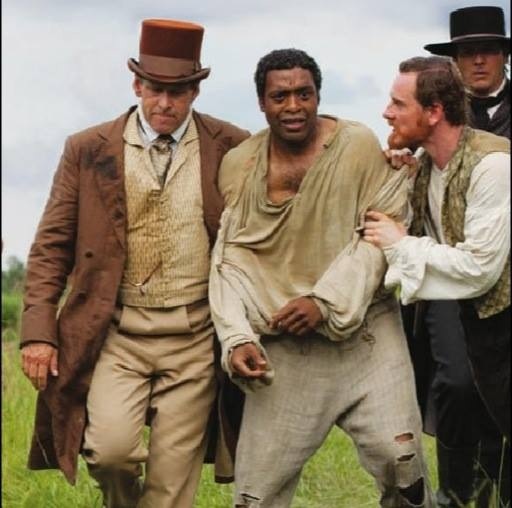 Furthering this personal reawakening of the scourge of slavery is my friendship with fellow music aficionado Rob Steinberg, with whom I stayed while in New Orleans. He is one of the stars of the new motion picture, “12 Years a Slave,” and was in between press junkets and premiers during my visit. His character is the one to set in motion the freeing of the protagonist from being kidnapped and enslaved. This jarring film is perhaps the most graphic representation of the brutality of American slavery to date. Another New Orleans connection I recently discovered is the fact that Louie Armstrong’s job as a young man was hauling junk for my Karnofsky relatives. The great Satchmo wore a Star of David pendant for the rest of his life as a tribute to the family that gave him love and guidance and taught him “how to live with real life and determination.”
Furthering this personal reawakening of the scourge of slavery is my friendship with fellow music aficionado Rob Steinberg, with whom I stayed while in New Orleans. He is one of the stars of the new motion picture, “12 Years a Slave,” and was in between press junkets and premiers during my visit. His character is the one to set in motion the freeing of the protagonist from being kidnapped and enslaved. This jarring film is perhaps the most graphic representation of the brutality of American slavery to date. Another New Orleans connection I recently discovered is the fact that Louie Armstrong’s job as a young man was hauling junk for my Karnofsky relatives. The great Satchmo wore a Star of David pendant for the rest of his life as a tribute to the family that gave him love and guidance and taught him “how to live with real life and determination.” thousand year journey from oppression to freedom. I think that this year’s once-in-a-lifetime connection with Thanksgiving requires that we expand our celebration with all humanity. The essence of Chanukah is a dichotomy: it represents the fight against assimilation into our host culture so that our heritage can remain distinct but it also carries our universal message of freedom for all. How can we influence the world if we disappear? If only all nations had the chance to witness the streets of urban Israel to see Jews of all colors working together to build up our Promised Land. Our Jewish light, the light that our prophet forecast will illuminate the entire world, shines ever more brightly when we unify as a people to stand against ignorance, racism, injustice, genocide. I’m grateful both for the guidance of our biblical heroes and our living examples of tolerance and courage today. How incredible to know as I was visiting the monuments and museums in Washington DC this week that just down the street an African American leads our proud country.
thousand year journey from oppression to freedom. I think that this year’s once-in-a-lifetime connection with Thanksgiving requires that we expand our celebration with all humanity. The essence of Chanukah is a dichotomy: it represents the fight against assimilation into our host culture so that our heritage can remain distinct but it also carries our universal message of freedom for all. How can we influence the world if we disappear? If only all nations had the chance to witness the streets of urban Israel to see Jews of all colors working together to build up our Promised Land. Our Jewish light, the light that our prophet forecast will illuminate the entire world, shines ever more brightly when we unify as a people to stand against ignorance, racism, injustice, genocide. I’m grateful both for the guidance of our biblical heroes and our living examples of tolerance and courage today. How incredible to know as I was visiting the monuments and museums in Washington DC this week that just down the street an African American leads our proud country.